Fat transfer has revolutionized body contouring by not only enhancing aesthetics but also serving as a protective measure against undesirable weight gain. This innovative procedure involves harvesting fat from areas of excess and transferring it to areas like the buttocks, face, or breasts, creating lasting volume and definition.
The Brazilian Butt Lift, a popular application of fat transfer, exemplifies how this technique can enhance body contours while simultaneously deterring the effects of aging and fluctuations in weight. By precisely sculpting these areas, patients gain a youthful appearance that can help combat the inevitabilities of aging.
Furthermore, the boost in self-confidence that accompanies these transformations often leads to healthier lifestyle choices. Patients are more likely to engage in regular exercise and maintain a balanced diet, creating a virtuous cycle that reinforces their commitment to wellness.
However, the most protective effect of fat transfer is that it protects against future weight gain in undesired areas. To appreciate this benefit, we must understand fat cell physiology and what makes fat cells grow. When you are positive in your caloric intake, you will transfer the unused energy into fat cells. As a result, fat cells become larger, and in fact, do not increase in number. This means that areas that have a larger number of fat cells per volume, will increase in size preferentially than areas that have a lower density of fat cells.
As such, the undesirable effects of weight gain that result in aesthetically unpleasant prominences can be avoided by ensuring that total body contouring is performed. Similarly, by transferring the fat to areas of desired prominence, you ensure that the growth of volume is directed by you.
In summary, fat transfer not only provides initial aesthetic enhancement but also plays a significant functional role in promoting overall health and well-being and avoiding growth in prominence in undesired areas, making it a comprehensive solution for those seeking to improve their body contours while protecting against unwanted weight gain.
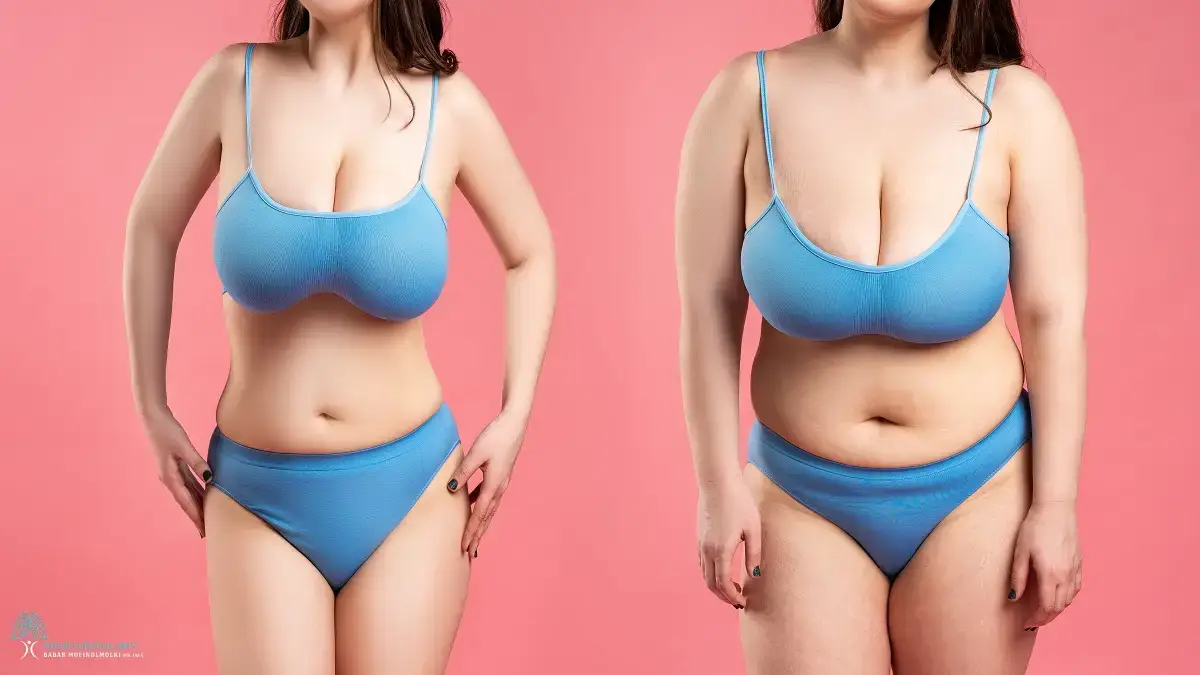
Fat Transfer Benefits
Fat transfer, also known as autologous fat grafting, is an increasingly popular cosmetic procedure that involves transferring fat from one area of the body to another. This technique utilizes the patient’s fat, making it a biocompatible and natural solution for enhancing volume and contours in various areas such as the face, breasts, and buttocks. As more individuals seek effective and minimally invasive methods for cosmetic enhancement, the benefits of fat transfer continue to gain attention.
This procedure not only provides a dual benefit of body contouring by removing unwanted fat but also rejuvenates and enhances other areas, offering a holistic approach to aesthetic improvement. In this exploration of fat transfer benefits, we will delve into its safety, versatility, and transformative potential, showcasing why it has become a favored choice among those looking to achieve a more youthful and fuller appearance without the need for synthetic fillers or implants.
Long-Lasting Results
Fat transfer procedures offer remarkable long-lasting results that often surpass those of other body contouring techniques. By utilizing the body’s fat, these procedures not only enhance areas like the face, breasts, and buttocks but also ensure the durability of these improvements, allowing patients to enjoy their refined appearance for years.
The use of autologous fat contributes to enhanced patient satisfaction, as it integrates seamlessly with existing body contours, creating natural-looking enhancements that are difficult to distinguish from surrounding tissues. Unlike synthetic fillers, which may require frequent touch-ups, fat transfer results are more stable, leading to less need for ongoing treatments.
Moreover, fat transfer procedures promote a rejuvenated appearance while maintaining authenticity, nurturing patient confidence and comfort in their bodies. As a result, individuals can experience a transformative journey that emphasizes their unique beauty while achieving a lasting effect. With the added benefits of safety and biocompatibility, fat transfer stands out as a preferred choice in the realm of body contouring.
Sagging Skin Solution
As we age, the challenges of sagging skin become increasingly evident, particularly in the lower third of the face. Gravity and collagen depletion contribute to a loss of volume and elasticity, resulting in noticeable signs of aging. This can manifest as deeper nasolabial folds and jowls, creating an appearance that may not reflect how we feel inside.
Facial fat transfer is an effective solution to combat these issues. By redistributing natural fat from other areas of the body, this procedure restores lost volume in mildly sagging skin, rejuvenating the face and providing a more youthful contour. Moreover, facial fat transfer serves as a valuable complement to facelift surgery, enhancing the results by filling in hollows and softening transitions between lifted areas and surrounding tissues.
This combined approach—utilizing both facelift surgery and facial fat transfer—proves to be a powerful strategy against the signs of aging. By addressing both the structural and volumetric aspects of the face, individuals can achieve a naturally refreshed and vibrant appearance that stands the test of time.
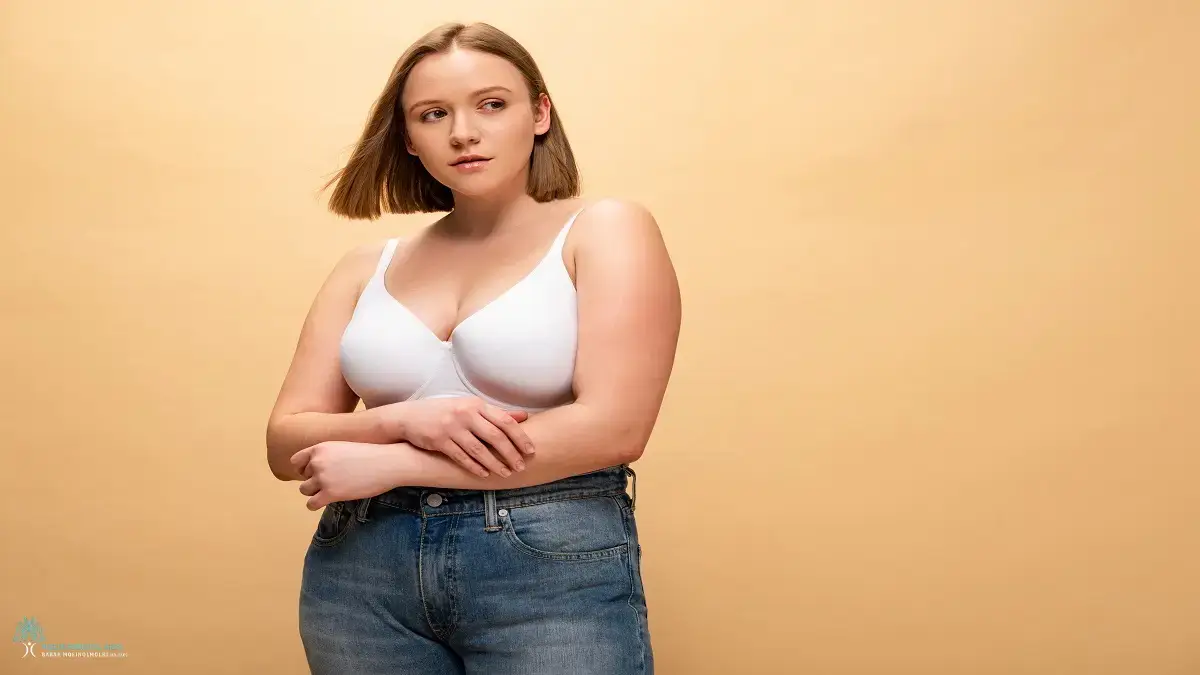
Protects against future Weight Gain
Maintaining a balanced diet and engaging in regular physical activity are essential strategies for protecting against future weight gain. A balanced diet provides the necessary nutrients for optimal body function while helping to regulate appetite and metabolism. Incorporating a variety of whole foods—such as fruits, vegetables, whole grains, and lean proteins—can prevent overeating and promote a sense of fullness.
In addition to a balanced diet, regular physical activity plays a crucial role in burning calories and building muscle, which further aids in long-term weight management. Together, these lifestyle changes foster a healthier relationship with food and exercise, reducing the likelihood of reverting to old habits that lead to weight gain.
Emphasizing sustainable lifestyle changes over fad diets is critical, as research indicates that these gradual adjustments promote lasting results and prevent the cyclical nature of weight loss and gain. By committing to a balanced diet and consistent physical activity, individuals can successfully navigate their weight management journey, establish healthy habits, and enhance their overall well-being.
The most important benefit of fat transfer is that it avoids the growth of gut fat with weight gain. Gut fat is the fat that surrounds the organs of your gut, and is associated with multiple metabolic diseases. The connection between gut fat and chronic metabolic illnesses is that the gut fat is that gut fat cells are inflammatory. Gut fat cells produce inflammatory cytokines, IL-6, and Tnf alpha, which cause systemic inflammation that is a root cause of chronic diseases.
Fat Transfer Optimizes Cosmetic Outcomes
Fat transfer is a transformative cosmetic procedure that optimizes cosmetic outcomes by enhancing volume and contour in both the target areas and donor sites. This dual benefit allows for the filling of areas such as the face, breasts, or buttocks while simultaneously improving the appearance of the donor site, such as the abdomen or thighs, leading to a more balanced body shape.
Utilizing the patient’s body fat ensures natural-looking results, minimizing the risk of allergic reactions or rejection. As the fat is harvested from areas where it is surplus, patients can achieve the desired volume enhancement without the concerns associated with synthetic fillers.
One of the most appealing aspects of fat transfer is its customization; the procedure can be tailored to meet individual needs. By adjusting fat quantity and placement, each patient can receive optimal results that align with their aesthetic goals. This personalized approach not only enhances confidence but also promotes long-lasting, natural results, making fat transfer an excellent choice for those seeking to elevate their appearance effectively.
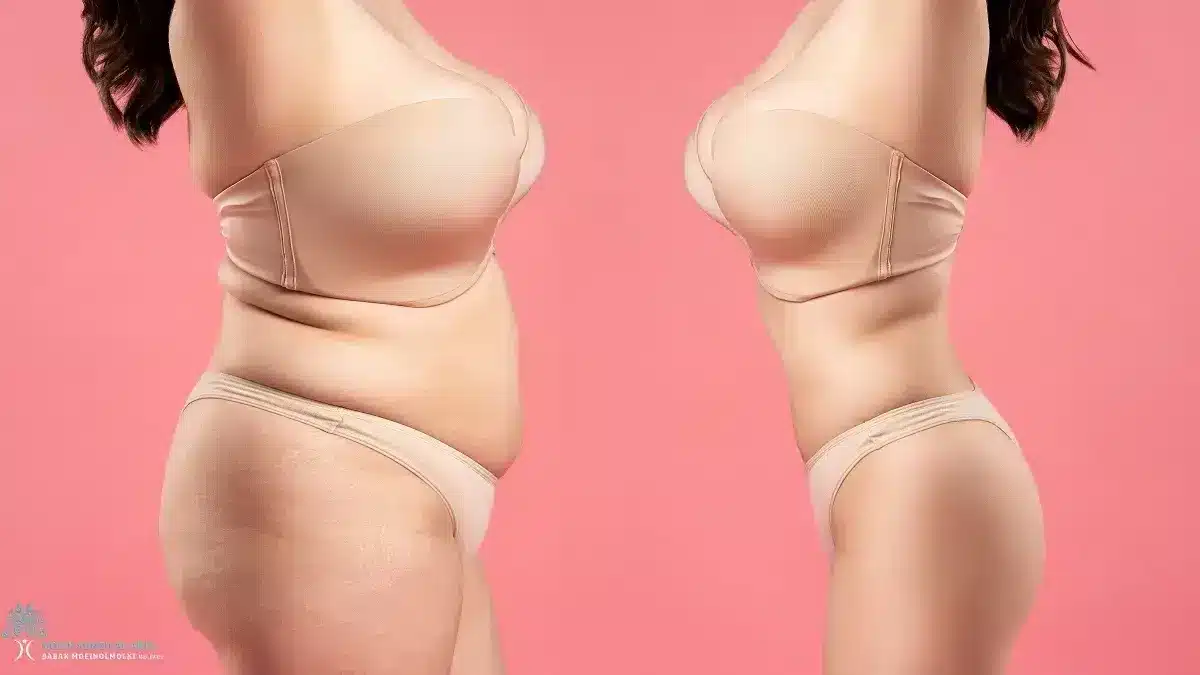
Fat Transfer Protects against Undesirable Weight Gain Summary
Fat transfer is a powerful technique that can help protect against undesirable weight gain by restoring youthful contours and volume to areas such as the breasts and buttocks, which often sag or lose definition with age. By enhancing body aesthetics, this procedure not only revitalizes your figure but also contributes to a positive body image.
When individuals feel confident about their appearance, they are often more motivated to maintain a healthy lifestyle, potentially discouraging weight gain. Additionally, fat transfer protects against the growth of gut fat cells, that cause both belly protuberance and systemic inflammation and illnesses. This is because, if there is inadvertent weight gain, then the weight gain is focused towards areas that increase prominence desired rather than unwanted areas.
Dr. Moein’s fat transfer technique is known for its safety and efficacy, delivering long-lasting results that enhance both the silhouette and overall self-esteem. This procedure utilizes your fat, ensuring a natural look and feel while minimizing complications. With the restored volume and improved contours, patients often experience a renewed sense of vitality, further promoting healthier lifestyle choices. Embracing fat transfer can thus be a proactive step not only toward aesthetic improvement but also toward maintaining a balanced and healthy body image.
]]>The price of fat transfer surgery also depends on various factors. Indeed, the cost to transfer fat to the face would range from $2,500 to $7,000. Fat transfer to the breasts would naturally cost between $6,000 and $12,000. Prices to do the Brazilian butt lift would be between $8,000 and $15,000.
Various factors can determine the cost of fat transfer procedures. First, the surgeon’s experience and qualifications. Some surgeons can be more qualified and experienced than others. Such surgeons can charge more money due to their superior qualifications and experience. Another thing is the location of the clinic or hospital. Most cities and towns will be more expensive than areas where the clinics and hospitals are not located.
Other variables that can affect the cost include the amount of fat to be transferred, the level of procedural complexity, and any other services/treatments to be undertaken. For example, the price will be higher if one has to undergo liposuction to transfer the fat. Other than that, the clinic/hospital’s reputation and esteem can also come into play. Just so you know, the prices will be estimates and will vary widely depending on individual circumstances and location. Hence, one has to consult an expert to obtain a proper quote for fat transfer procedures.
Get Your Personalized Fat Transfer Quote Today
Discover your exact cost with a FREE consultation from our board-certified surgeon
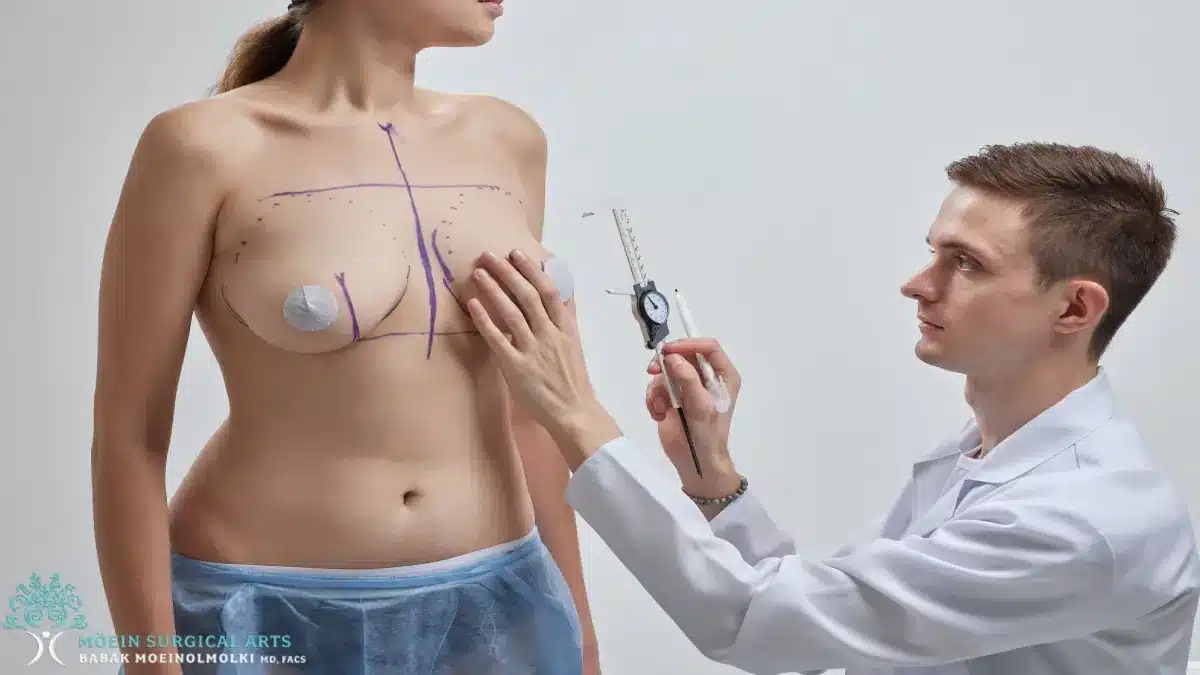
Fat Transfer Pricing Factors
Here, the various parameters that determine the cost of a fat transfer surgery will be discussed. The cost of fat transfer surgery may vary, and an individual should be aware of the cost-determining parameters.
Another variable influencing fat transfer pricing is the quantity of fat to be transferred and harvested. The larger the procedure is, the higher the price will be. This is because more fat is more time- and labor-intensive to inject, clean, and harvest. Another variable can be the donor and receiver areas’ size.
It is worth noting that most insurance companies do not cover fat transfer procedures. As these procedures are usually considered elective or cosmetic in nature, patients are typically responsible for the full cost. However, it is important to check with your insurance provider for any specific policies or coverage options.
Fortunately, for those seeking financing options, various medical financing companies offer flexible payment plans for cosmetic procedures, including fat transfer. These options enable patients to make affordable monthly payments instead of paying the entire cost upfront.
In summary, fat transfer pricing is influenced by factors such as the amount of fat involved, insurance coverage limitations, and the availability of financing options. Understanding these factors can help individuals make informed decisions about their fat transfer procedure, taking into account both their aesthetic goals and financial considerations.
Area of Fat Transfer
The area of fat transfer is a groundbreaking technique in cosmetic surgery that has gained popularity in recent years. This innovative procedure involves the removal of excess fat from one area of the body, such as the abdomen or thighs, and transferring it to another area that lacks volume, such as the buttocks or breasts. Fat transfer provides patients with a natural and long-lasting solution to enhance their appearance, eliminating the need for implants or synthetic materials. This technique not only helps contour and sculpt various body areas but also offers a host of other benefits, including minimal scarring, improved body proportions, and a reduced risk of complications. In the following sections, we will explore the different areas where fat transfer can be performed, highlighting its versatility and potential to enhance overall body aesthetics.
Buttock Fat Transfer
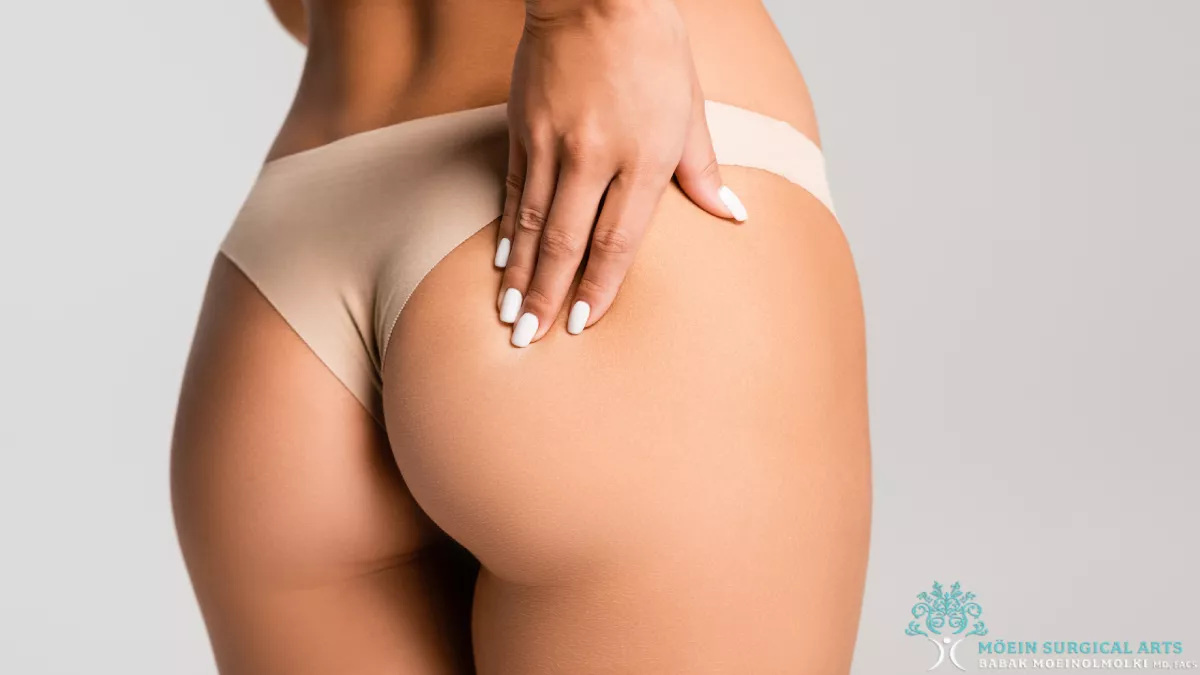
Buttock fat transfer, also known as fat grafting, is a surgical procedure used to enhance the contour, shape, and size of the buttocks. It involves the transfer of fat from one part of the body to the buttocks to achieve a more desired appearance.
During the procedure, excess fat is first harvested from areas such as the abdomen, thighs, or hips through liposuction. This fat is then carefully processed and purified to remove impurities and fluids. Once purified, the fat is injected into specific areas of the buttocks to achieve the desired volume and shape.
One of the key benefits of buttock fat transfer is that it provides a natural and long-lasting solution to enhance the buttocks without the use of implants or foreign substances. Additionally, since the fat used in the procedure is harvested from the patient’s own body, there is no risk of rejection or allergic reaction.
Ideal candidates for buttock fat transfer are individuals who desire a fuller and rounder buttock appearance, have sufficient fat stores in other areas of the body for harvesting, and are in good overall health. It is important for candidates to have realistic expectations and to understand that the results may vary from person to person.
Following the procedure, patients will experience some swelling and bruising in the treated areas. Pain medication and compression garments may be prescribed to alleviate any discomfort. It is recommended to avoid sitting or lying directly on the buttocks for the first few weeks after the procedure to ensure optimal healing.
Overall, buttock fat transfer is a safe and effective procedure that can provide noticeable enhancement to the buttocks, resulting in improved self-confidence and satisfaction with one’s appearance.
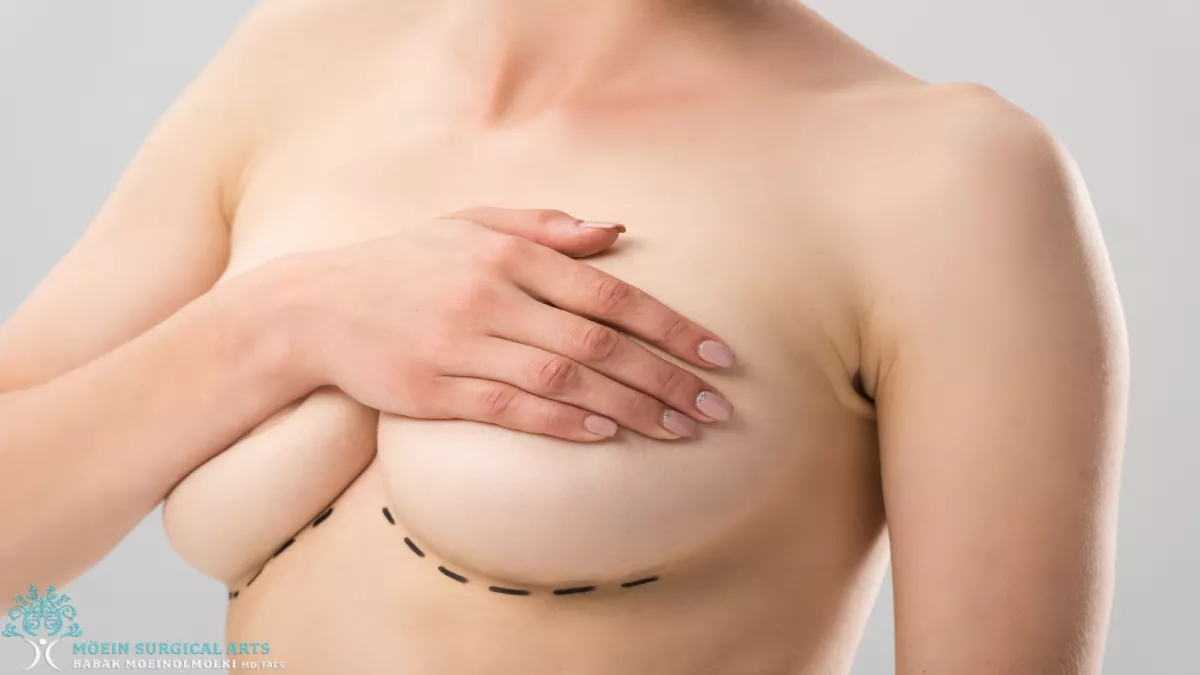
Breast Fat Transfer Cost in Los Angeles
Breast fat transfer, also known as autologous fat transfer or lipofilling, is a surgical procedure that involves the removal of excess fat from one area of the body and transferring it to the breasts to increase their size and improve their contour.
The process of breast fat transfer begins with the surgeon extracting excess fat from areas such as the abdomen, thighs, or buttocks through liposuction. The harvested fat is then purified and processed to remove any impurities, ensuring optimal results.
Next, the purified fat cells are carefully injected into the breasts using small cannulas. The surgeon strategically places the fat cells to achieve symmetrical and natural-looking results. By using the patient’s own fat, the procedure enhances the breasts’ natural shape, resulting in a subtle and proportionate increase in size.
Breast fat transfer offers several benefits compared to traditional breast augmentation with implants. First and foremost, it provides a more natural-looking result, as the fat cells retain their natural characteristics and behave like regular breast tissue. This eliminates the risk of implants causing unnatural or obvious outcomes.
Additionally, breast fat transfer eliminates the potential risks associated with breast implants, such as implant rupture, capsular contracture, or the need for implant replacement in the future. Moreover, the procedure allows for simultaneous body contouring through the removal of excess fat from problem areas.
In conclusion, breast fat transfer offers a safe and effective method for increasing breast size and improving contour. It provides natural-looking results while eliminating the risks associated with breast implants. By using the patient’s own fat, the procedure creates a harmonious and proportionate outcome, resulting in enhanced self-confidence and satisfaction.
Fat Transfer to Contour Irregularities
Fat transfer, also known as fat grafting or fat injection, is a surgical procedure used to contour irregularities on the body. This procedure involves extracting unwanted fat from one body area, purifying it, and then injecting it into another area to improve its shape and symmetry.
Fat transfer can be performed on various areas of the body where contour irregularities are present. Common areas include the buttocks, breasts, face, hands, and calves. It can also be used to fill in hollow areas and correct defects and deformities caused by injury, surgery, or congenital conditions.
The benefits of fat transfer for contour irregularities are numerous. Firstly, it is a natural and safe technique as it uses the patient’s own fat cells, thereby eliminating the risk of rejection or allergic reactions. Secondly, by utilizing a patient’s own fat, it can provide a more long-lasting and permanent solution compared to other temporary fillers. In addition, fat transfer allows for precise contouring, resulting in natural-looking and proportional results. The harvested fat can also be used to improve skin texture and quality in the treated area.
In conclusion, fat transfer is an effective procedure for correcting contour irregularities. It offers numerous benefits including the use of the patient’s own fat cells, long-lasting results, and natural-looking outcomes. Whether it is to correct defects caused by injury, surgery, or congenital conditions, this procedure can significantly improve the appearance and self-confidence of individuals.

Volume of Fat Transfer
Fat transfer, also known as fat grafting or fat injection, is a popular procedure used to enhance body contours or rejuvenate specific areas of the body. It involves harvesting fat from one part of the body and transferring it to another, resulting in a more attractive and natural appearance.
The volume of fat transfer varies depending on the individual’s goals and the targeted areas. Typically, a mini liposuction technique is used to extract excess fat from areas such as the abdomen, thighs, or hips. The harvested fat is then carefully processed to remove impurities and prepare it for injection.
Fat can be injected into various areas of the body to achieve the desired results. One common area is the breasts, where fat transfer can be used to increase their size and improve their shape. This technique offers a more natural alternative to traditional breast implants.
Another popular area for fat transfer is the buttocks. Often referred to as a Brazilian butt lift, this procedure uses harvested fat to add volume and enhance the shape of the buttocks, resulting in a curvier and more youthful appearance.
Fat transfer can also be used to rejuvenate the face, smoothing out wrinkles, filling in hollow areas, and restoring lost volume. This technique is particularly effective for areas such as the cheeks, lips, and hands, where volume loss is commonly observed with age.
In addition to these areas, fat transfer can also be used to enhance the appearance of the labia and provide a fuller, more youthful look.
Overall, fat transfer volume is an important consideration in body contouring procedures, as it allows for targeted and customized results. By using the patient’s own harvested fat, this technique offers a safe and effective way to enhance body contours and rejuvenate specific areas.
Fat Transfer to the Face
Fat transfer to the face is a cosmetic procedure that involves taking fat from one part of the body and transplanting it into the face. This technique is used to restore volume to areas that have lost fullness due to aging or other factors. It can also smooth out lines and wrinkles, ultimately revitalizing the appearance.
During the procedure, fat is usually harvested from areas such as the abdomen, thighs, or buttocks through a process called liposuction. The fat is then processed and purified before being carefully injected into the desired areas of the face. This method ensures that the transferred fat will have a higher chance of survival and lasting results.
Fat transfer to the face can be performed as a standalone treatment, or it can be combined with other cosmetic procedures such as facelifts or dermal fillers for enhanced results. Combining treatments can provide more comprehensive facial rejuvenation, addressing multiple concerns simultaneously.
The major advantage of fat transfer to the face is that it uses the patient’s own natural tissue. This reduces the risk of adverse reactions or rejection compared to synthetic fillers. Additionally, the transplanted fat has the potential to last longer and provide more natural-looking results.
In summary, fat transfer to the face is a procedure that involves taking fat from one area of the body and injecting it into the face. It can restore volume, smooth out lines and wrinkles, and revitalize the appearance. It can be performed on its own or in combination with other procedures to achieve optimal results.
Extent of Body Contouring
Body contouring procedures are designed to enhance the shape and appearance of the body by effectively removing excess fat, tightening loose skin, and improving muscle definition. Here are three common types of body contouring techniques:
1. Liposuction: Liposuction is a surgical procedure aimed at removing stubborn fat deposits from various areas of the body. It can be performed on the abdomen, thighs, hips, arms, buttocks, and other target areas. The goal of liposuction is to create a more proportionate silhouette by contouring specific areas and improving overall body shape.
2. Tummy Tucks: Also known as abdominoplasty, a tummy tuck is a surgical procedure that primarily targets the abdomen. It involves removing excess skin and fat while tightening the abdominal muscles for a flatter, firmer, and more toned midsection. Tummy tucks are ideal for individuals who have undergone significant weight loss or pregnancy and wish to improve the appearance of their abdomen.
3. Body Lifts: A body lift is a comprehensive surgical procedure that focuses on multiple areas of the body simultaneously. It involves removing excess skin and fat, tightening sagging tissues, and enhancing overall body contour. Body lifts are commonly performed on individuals who have experienced significant weight loss or have loose skin due to aging. These procedures typically target the abdomen, buttocks, thighs, and arms.
The aesthetic goals that can be achieved with these body contouring procedures include a more toned and defined physique, improved body proportions, and increased self-confidence. Each procedure can address specific areas of concern, such as stubborn fat deposits, loose or excess skin, and muscle laxity. By combining the appropriate techniques, individuals can achieve their desired body shape and improve their overall appearance.
Anesthesia Chosen for Fat Transfer
Anesthesia Type & Estimated Add-On Cost
| Anesthesia Type | Estimated Add-On Cost |
|---|---|
| Local (Awake) | Included or +$500 |
| IV Sedation | +$1,000 – $1,500 |
| General Anesthesia | +$1,800 – $3,000 |
Anesthesia is an essential component of ensuring a safe and comfortable fat transfer procedure. The appropriate choice of anesthesia greatly depends on the specific needs and preferences of the patient, as well as the surgeon’s expertise and the extent of the fat transfer. This article provides an overview of the various types of anesthesia commonly chosen for fat transfer procedures, including local anesthesia, twilight sedation, and general anesthesia. Understanding the different options and their benefits can help both patients and surgeons make informed decisions regarding the most suitable type of anesthesia for a successful fat transfer procedure.
Local or Awake Fat Transfer
Local or awake fat transfer is a cosmetic procedure that involves the transfer of fat from one part of the body to another. This technique is commonly used to add volume or contour areas such as the face, buttocks, breasts, or hands.
The procedure is performed under local anesthesia, allowing the patient to remain awake throughout the process. Firstly, fat is harvested from areas of the body where it is in excess, typically the abdomen, thighs, or buttocks, using liposuction techniques. The fat is then processed to remove impurities and damaged cells.
Next, the surgeon carefully injects the purified fat into the desired area, sculpting and distributing it evenly to create a natural-looking result. The technique involves multiple small injections, ensuring the fat cells receive an adequate blood supply for survival and integration.
Local or awake fat transfer offers several benefits. Firstly, it utilizes the patient’s natural fat, reducing the risk of allergic reactions or rejection. Additionally, the procedure can be tailored to the patient’s preferences, allowing for precise augmentation and shaping. Furthermore, because the procedure is conducted under local anesthesia, it avoids the risks associated with general anesthesia.
Potential candidates for local or awake fat transfer are individuals looking to add volume, improve contours, or correct asymmetry in specific areas of the body. It is important for patients to have sufficient fat deposits in donor areas for extraction. Moreover, patients should be in good overall health and have realistic expectations regarding the outcomes of the procedure.
General Anesthesia Fat Transfer
A fat transfer procedure performed under general anesthesia involves several key steps to ensure optimal results. Let’s explore the process, starting with preparing the patient for surgery.
1. Preoperative assessment: Before the procedure, the patient is thoroughly evaluated to determine their suitability for general anesthesia. Medical history, physical examination, and necessary laboratory tests are conducted.
2. Administering general anesthesia: Once the patient is ready, a qualified anesthesiologist administers general anesthesia, ensuring their comfort and safety throughout the procedure.
3. Liposuction for fat removal: After the patient is under anesthesia, the surgeon like Dr. Moein performs liposuction on the predetermined donor sites. Liposuction involves making small incisions and inserting a cannula to suction out excess fat. Common donor areas include the abdomen, thighs, or buttocks.
4. Fat preparation: The fat removed through liposuction is then carefully processed for reinjection. This involves centrifuging or decanting the fat to separate it from unwanted fluids and debris. The purified fat is then transferred to smaller syringes for reinjection.
5. Reinjection into the desired area: The surgeon carefully injects the prepared fat into the desired area(s), ensuring optimal contouring. Techniques may vary based on the specific goals of the procedure and the surgeon’s expertise. The fat is injected in multiple thin layers to facilitate proper blood supply and integration with the surrounding tissues.
6. Gentle massage for contouring: To further enhance the results, the surgeon slowly massages the fat into the desired area. This gentle manipulation helps ensure even distribution and proper blending of the transferred fat with existing tissues, promoting a natural-looking outcome.
In summary, a fat transfer procedure performed under general anesthesia involves preoperative assessment, administration of anesthesia, liposuction for fat removal, preparation of the fat through centrifugation or decanting, reinjection into the desired area, and gentle massage for optimal contouring.
 Financing Options
Financing Options
Most patients finance their procedure through:
- CareCredit
- Alphaeon Credit
- In-house payment plans (upon approval)
You may wish to promote “0% interest for 12 months” or similar promotional offers for higher conversions.
Conclusion: How much does Fat Transfer Cost?
Full Fat Transfer Cost Breakdown by Area and Type
| Treatment Area | Price Range | Details |
|---|---|---|
| Fat Transfer to Face | $3,500 – $6,000 | Cheeks, under eyes, and temples. Often for facial rejuvenation. |
| Fat Transfer to Breasts | $6,500 – $9,500 | Moderate volume enhancement. Uses 300–500cc per breast typically. |
| Fat Transfer to Buttocks (BBL) | $7,500 – $12,000 | High-volume gluteal shaping. Often includes VASER and Renuvion. |
| Fat Transfer to Hands | $3,000 – $5,000 | Restores volume and youthfulness to aging hands. |
| Fat Transfer for Hip Dips | $4,500 – $7,000 | Fills in lateral hip indentations for smooth, curvier hips. |
| Fat Transfer for Contour Correction | $4,000 – $8,000 | Refines uneven areas or revision from previous procedures. |
| Large-Volume Fat Transfer | $10,000 – $15,000+ | Multiple areas with significant liposuction and transfer volume. |
In conclusion, the cost of fat transfer procedures can vary based on several factors. The area being treated and the amount of fat being transferred are two essential factors that influence the overall cost.
When considering specific fat transfer treatments, the average price ranges can provide a useful guideline. For facial fat transfers, which are popular for rejuvenating the face and adding volume, the cost generally falls within the range of $2,500 to $7,000. Breast augmentations using fat transfer techniques typically range between $6,000 and $12,000, depending on the desired outcome and complexity of the procedure.
For body contouring procedures, such as Brazilian butt lifts or fat transfers to the hips, the average price range can vary significantly. On average, the cost for these procedures falls between $8,000 and $15,000, with the exact price depending on factors such as the specific technique used and the amount of fat transferred.
It is important to note that these average price ranges are just general guidelines, and individual cases may vary. Before undergoing any fat transfer procedure, it is recommended to consult with a board-certified plastic surgeon who can provide a personalized assessment and discuss the specific costs involved.
In summary, the cost of fat transfer procedures can vary depending on factors such as the area being treated and the amount of fat transferred. Understanding the average price ranges for different fat transfer treatments can help guide individuals in their decision-making process.
Ready to Save with Natural Fat Transfer?
Join thousands of satisfied patients who chose Dr. Moein for their body transformation journey
In reviewing cosmetic surgery options such as the Fat Transfer to Buttocks or Brazilian Butt Lift, the initial question that comes to mind is always, “What’s the cost?” The Cost of a Fat Transfer to the buttocks can vary considerably depending on the state and city in the US.
The average cost of a Fat Transfer to the Buttocks in the United States varies from $8,000 to $18,000. The above range covers most procedures and should give an estimate of what to expect. However, I would like to point out that there may be substantial variation depending on your location.
In larger cities such as New York or Los Angeles, for instance, the cost of the Fat Transfer to Buttocks procedure may be much higher due to factors like high demand and surgeons’ specialized knowledge in these regions. As such, it should not come as a surprise that the average cost of such a procedure may be higher than the average.
In the end, the Cost of a Fat Transfer to the Buttocks in the US may vary depending on the state and location where it is performed. The ideal approach would be to consult a board-certified plastic surgeon to discuss the details.
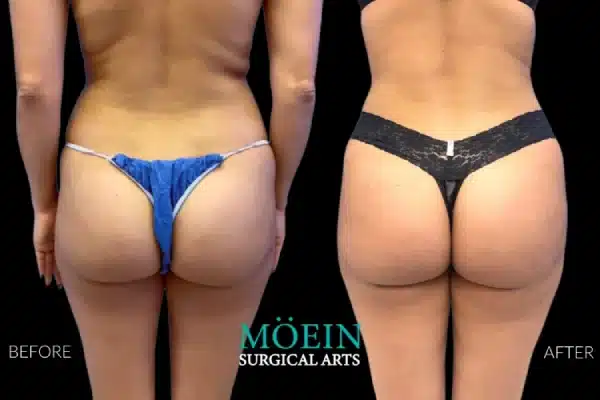
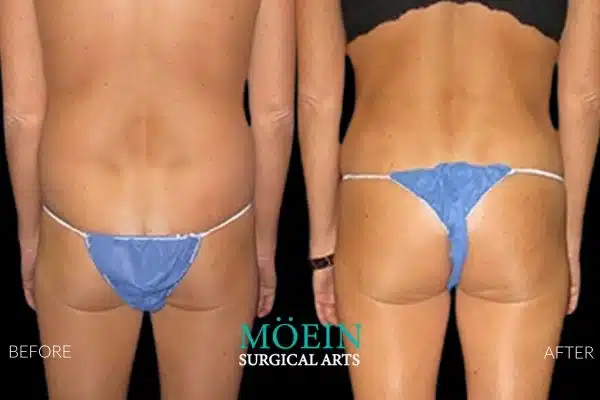
Fat Transfer Cost Determining Factors
When considering a fat transfer procedure, it is important to understand the factors that contribute to the overall cost. Determining the cost of fat transfer involves several factors essential to both the patient and the surgeon. By exploring the factors that influence fat transfer cost, individuals can better understand the financial aspects of the procedure and make informed decisions regarding their cosmetic goals.
Fat Transfer to Buttocks (BBL) Cost Breakdown
Los Angeles Average Pricing 2025
| Cost Component | Average Range | Dr. Moein’s Office | Details |
|---|---|---|---|
| Surgeon’s Fee | $6,000 – $12,000 | Competitive | Fat harvesting + expert transfer technique |
| Anesthesia Fee | $1,500 – $2,500 | Included | Board-certified anesthesiologist |
| Facility/OR Fee | $2,000 – $4,000 | Included | Accredited surgical center |
| Liposuction Areas | $1,500 – $3,000 per area | 2-3 areas incl. | Abdomen, flanks, back, thighs |
| Compression Garments | $150 – $350 | Included | Medical-grade post-op garments |
| Pre-Op Lab Tests | $300 – $500 | Variable | Blood work & medical clearance |
| Post-Op Medications | $100 – $250 | Included | Pain meds & antibiotics |
| Follow-up Visits | $0 – $500 | 1 Year Free | Post-op care & monitoring |
| TOTAL COST RANGE | $12,000 – $25,000 LA Average | $10,000 – $18,000 All-Inclusive Package | *Prices vary based on individual needs |
 Important Considerations:
Important Considerations:
- Financing Available: Monthly payment plans from $250-$500/month
- Insurance: Cosmetic BBL is not covered by insurance
- Additional Costs: Recovery supplies, special pillows, lymphatic massage ($100-150/session)
- Revision Rate: 10-15% may need touch-ups (additional $3,000-$5,000)
Get Your Personalized BBL Quote
Schedule a free consultation with Dr. Moein to discuss your goals and receive an accurate cost estimate.
 Call (310) 455-8020
Call (310) 455-8020Volume of Fat Transferred
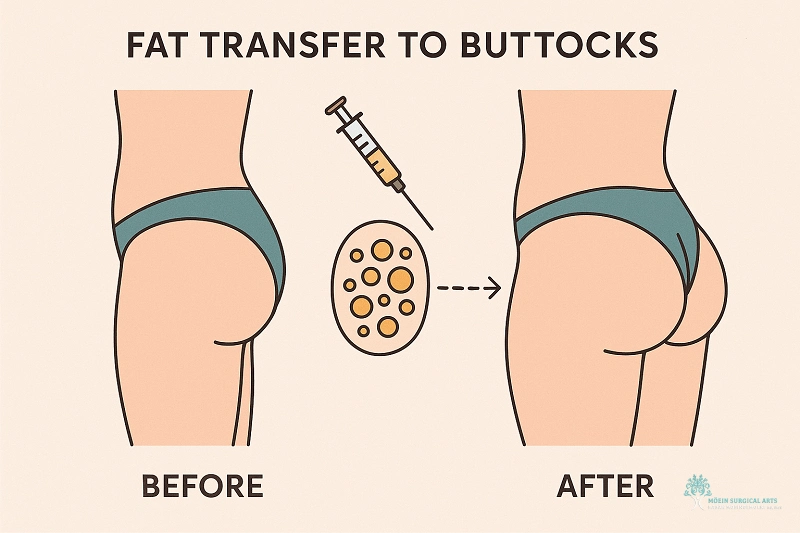
The Volume of Fat Transferred in Fat Transfer Procedures
Fat transfer procedures have gained popularity in recent years as a way to enhance various areas of the body. One of the key factors to consider in fat transfer procedures is the volume of fat that is transferred to achieve the desired results.
Body fat can be used as a soft tissue filler material in fat transfer procedures to create larger increases in volume. This is particularly beneficial when enhancing the breasts and buttocks, as these areas often require a significant increase in size to achieve the desired aesthetic.
One of the advantages of using body fat as a filler material is that it provides longer-lasting results compared to synthetic fillers. The body fat that is transferred becomes incorporated into the existing tissues of the body, allowing for a more natural and sustainable augmentation. Additionally, using body fat as a filler material eliminates the risk of allergic reactions or rejection that can occur with synthetic fillers.
In conclusion, the volume of fat transferred plays a crucial role in fat transfer procedures. Body fat serves as an ideal soft tissue filler material, allowing for larger increases in volume when enhancing the breasts and buttocks. The use of body fat also provides advantages over synthetic fillers, including longer-lasting results and reduced risk of complications.
The Amount of Liposuction Performed
The cost of liposuction can vary depending on several factors, including the amount of liposuction performed. The amount of liposuction is determined by the number of areas being treated and the type of liposuction technique used.
Liposuction techniques can include traditional liposuction, which involves using a cannula to suction out fat, or newer techniques such as laser-assisted or ultrasound-assisted liposuction. The type of technique used can affect the cost of the procedure.
The number of areas being treated is another factor that can affect the cost of liposuction. Treating multiple areas may result in a higher cost as more work and time will be involved.
However, some surgeons may offer discounts or cost reductions for treating multiple areas or for combining liposuction with other procedures. For example, if a patient wants to have liposuction on their abdomen and thighs, they may be able to receive a discounted rate for treating both areas. Combining procedures, such as liposuction and a tummy tuck, can also result in cost savings.
In conclusion, the cost of liposuction is determined by the amount of liposuction performed, which is influenced by the number of areas treated and the type of liposuction technique used. Potential discounts or cost reductions may be available for treating multiple areas or combining procedures.
If buttock implant removal is needed?
If buttock implant removal is needed, there are several important steps and considerations. First, a skilled surgeon must assess the patient’s individual case and determine the best approach for removal. This may involve making an incision and carefully extracting the implants without causing damage to the surrounding tissues.
During the extraction process, the surgeon must exercise extreme caution to avoid potential complications. The implants are typically located within the gluteal muscles, which are delicate and prone to injury. A skilled surgeon will carefully remove the implants, taking care not to disrupt the surrounding tissues, nerves, or blood vessels.
There are potential risks and complications associated with buttock implant removal surgery. These can include bleeding, infection, changes in sensation, scarring, and asymmetry. The recovery process will vary depending on the individual, but typically involves a period of rest and avoiding strenuous activity. Post-operative care may include pain management, monitoring for infections, and follow-up appointments with the surgeon to ensure proper healing. It is important for patients to closely follow the surgeon’s instructions and attend all post-operative appointments to ensure the best possible outcome.
In conclusion, buttock implant removal surgery requires the expertise of a skilled surgeon to safely extract the implants without causing harm to the surrounding tissues. The recovery process may involve potential risks and complications, but with proper post-operative care and follow-up appointments, patients can achieve successful outcomes.
Buttock Tuck vs Fat Transfer: Understanding the Key Differences
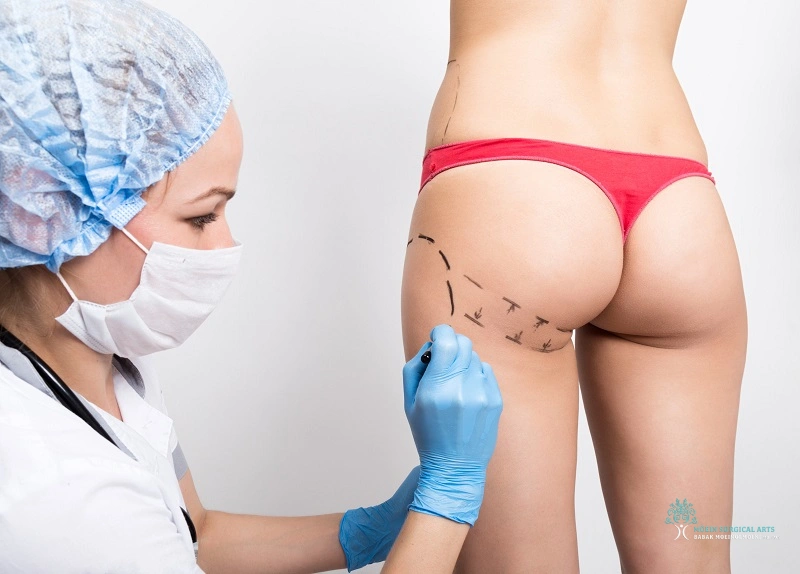
Buttock tuck surgery, also known as a gluteal lift or buttock lift, may be indicated for individuals who have loose or sagging skin in the buttock area. This can be a result of aging, significant weight loss, or genetics. The procedure aims to improve the shape and contour of the buttocks by removing excess skin and tightening the underlying tissues.
The procedure begins with the administration of anesthesia, usually general anesthesia, to ensure the patient’s comfort during the surgery. The surgeon then makes incisions in strategic locations, typically along the bikini line, extending towards the sides and lower back. The excess skin is carefully trimmed away, and the remaining skin is pulled upward and sutured together for a tighter appearance. In some cases, liposuction may also be performed to remove excess fat and achieve a more sculpted look.
The potential benefits of buttock tuck surgery include enhanced buttock shape and firmness, improved self-confidence, and the ability to fit into clothing more comfortably. However, it is essential to be aware of the potential risks and complications associated with this procedure. These may include bleeding, infection, scarring, asymmetry, changes in sensation, and poor wound healing.
Buttock tuck surgery differs from buttock enhancement procedures such as fat grafting or implants. While buttock enhancement procedures aim to increase the volume and projection of the buttocks, buttock tuck surgery primarily focuses on removing excess skin and improving the overall shape.
Common techniques used in buttock tuck surgery include the traditional lower body lift, the upper buttock lift, or a combination of both. The expected recovery time after buttock tuck surgery may vary, but typically patients can return to work and normal activities within 2-3 weeks. Post-operative care may involve wearing compression garments, taking prescribed pain medication, and following a specific diet to aid in the healing process.
In conclusion, buttock tuck surgery may be a suitable option for individuals with loose or sagging skin in the buttock area. It aims to improve the shape and contour of the buttocks by removing excess skin and tightening the underlying tissues. However, potential risks and complications should be carefully considered before undergoing this procedure.
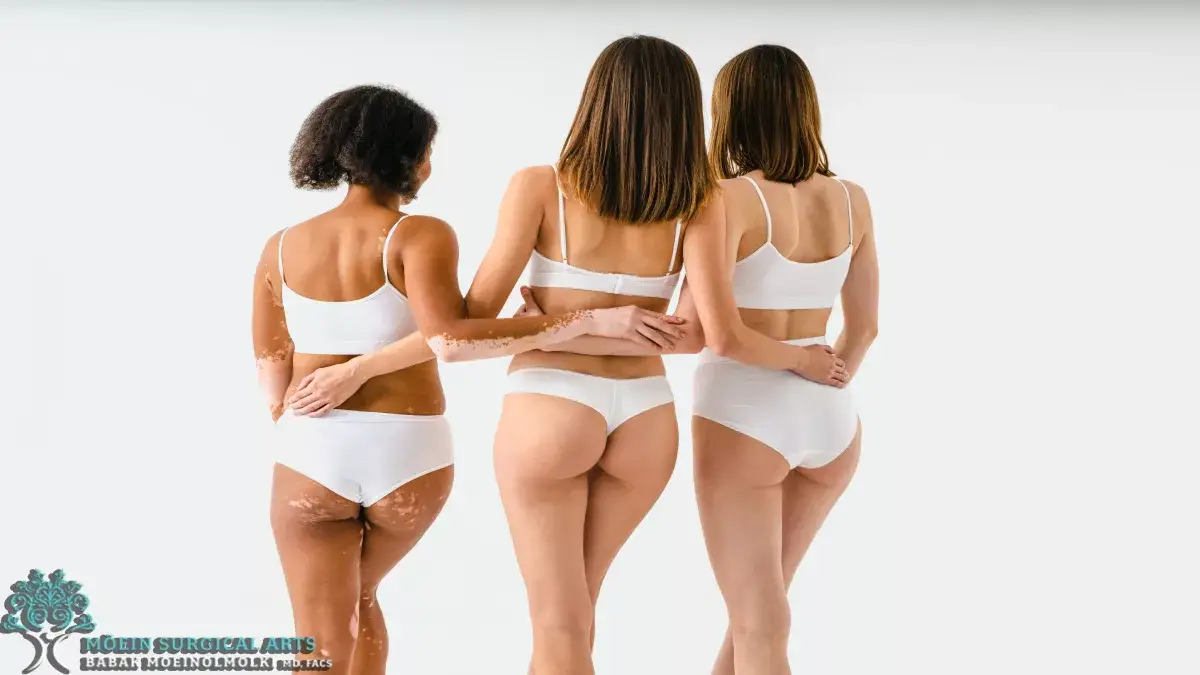
What does the cost of a Brazilian butt lift include?
Introduction: The cost of a Brazilian butt lift is determined by several factors and typically includes multiple components. This popular cosmetic procedure involves enhancing the shape and size of the buttocks through fat grafting, commonly referred to as a “fat transfer.” The overall cost varies depending on various factors, such as the surgeon’s experience and reputation, the geographical location of the clinic, the extent of the procedure, and additional expenses associated with pre-operative and post-operative care. Understanding what the cost of a Brazilian butt lift includes is crucial for prospective patients to make informed decisions and have realistic expectations.
Surgeon’s fee for Fat Harvest and Transfer
Surgeon’s fee for fat harvest and transfer is an important consideration when planning for this cosmetic procedure. The cost of the surgeon’s fee can vary depending on several factors.
Firstly, the complexity of the procedure plays a significant role in determining the cost. More complex surgeries that require a higher level of skill and expertise will generally have a higher surgeon’s fee. This is because these procedures often involve more time and effort from the surgeon.
The experience and expertise of the surgeon also contribute to the cost. Surgeons who have been practicing for many years and have a proven track record of successful surgeries tend to charge higher fees. Their expertise and reputation justify the higher cost.
Additionally, the location of the clinic can influence the surgeon’s fee. Clinics located in major cities or prestigious areas may charge more due to higher overhead costs.
Apart from the surgeon’s fee, there may be additional costs involved. These can include anesthesia fees, as well as facility fees for using the surgery center.
To help make the procedure more affordable, potential financing options may be available. Patients can explore options such as medical credit cards, installment plans, or financing arrangements with the clinic or a third-party provider.
In conclusion, the surgeon’s fee for fat harvest and transfer can vary depending on the complexity of the procedure, the experience and expertise of the surgeon, and the location of the clinic. Additional costs such as anesthesia fees and facility fees may also be involved. Exploring financing options can help make the procedure more accessible to those seeking it.
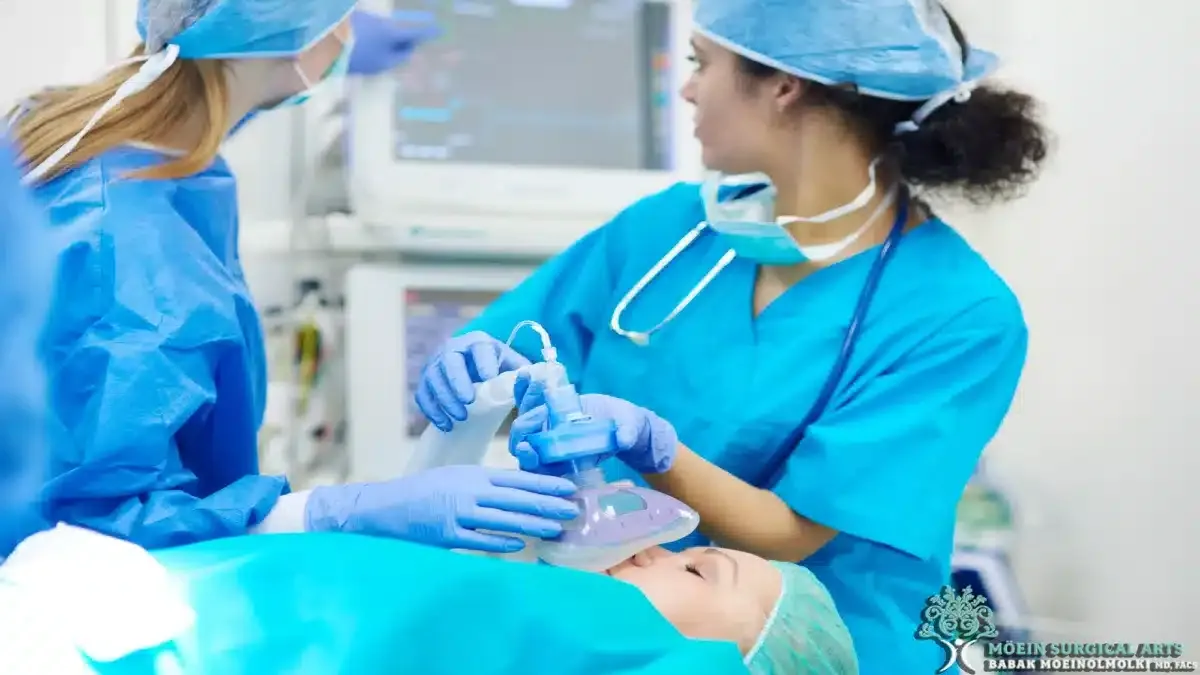
Anesthesiologist Fee For BBL
An anesthesiologist plays a crucial role in surgery by ensuring the patient’s safety and comfort during the procedure. Their expertise in administering anesthesia and monitoring the patient’s vital signs is essential for a successful surgery. As a result, an anesthesiologist fee is necessary to cover their specialized skills and services.
One procedure where the use of an anesthesiologist and general anesthesia is often required is traditional liposuction. This cosmetic surgery involves the removal of excess fat through suction, typically performed under general anesthesia. General anesthesia allows the patient to be completely unconscious and pain-free during the procedure. The anesthesiologist carefully administers the anesthesia, ensuring the patient’s comfort and safety throughout the surgery. They monitor the patient’s vital signs such as heart rate, blood pressure, and oxygen levels, making adjustments as needed to maintain stability.
The importance of an anesthesiologist cannot be overstated. Their presence significantly reduces the risks associated with surgery and ensures the patient’s well-being. Their expertise and specialized training allow them to anticipate potential complications and act quickly to mitigate them. While the anesthesiologist fee may add to the overall cost of a surgical procedure, its value lies in the specialized care, attention, and expertise provided by these medical professionals.
In conclusion, an anesthesiologist fee is necessary to cover the role and importance of an anesthesiologist during surgery. The use of general anesthesia, as required in traditional liposuction and other procedures, highlights the importance of the anesthesiologist in ensuring patient comfort and safety. Their expertise and vigilance throughout the surgery significantly contribute to the overall success and positive outcomes of surgical procedures.
Facility Fee for the Operation
The facility fee for a surgical operation refers to the cost associated with the use of the medical facility where the surgery is performed. The fee is typically separate from the fees charged by the surgeon and anesthesiologist. It covers the expenses related to the use of the operating room, recovery room, nursing staff, and any necessary equipment or supplies.
One significant factor that contributes to the cost difference between having surgery in a hospital and an outpatient clinic is the overhead expenses. Hospitals have larger facilities with higher operating costs, including maintenance, utilities, and staffing. These costs are spread out across all services offered by the hospital, including surgeries. On the other hand, outpatient clinics are typically smaller and have lower overhead expenses, resulting in lower facility fees for patients.
Another factor that affects the variation in facility fees is the level of care required. Some surgeries may necessitate a higher level of medical and nursing staff, specialized equipment, and longer recovery times, which may increase the facility fee. Additionally, surgeries performed in hospitals often involve more complex cases or require specialized resources, leading to higher fees compared to procedures that can be performed in outpatient clinics.
To sum up, the facility fee for a surgical operation is influenced by various factors, including the surgery location (hospital or outpatient clinic) and the specific requirements of the procedure. Patients should consult with their healthcare provider or insurance company to understand the cost difference and factors contributing to the variation in facility fees.
How much does a Brazilian butt lift cost across the United States?
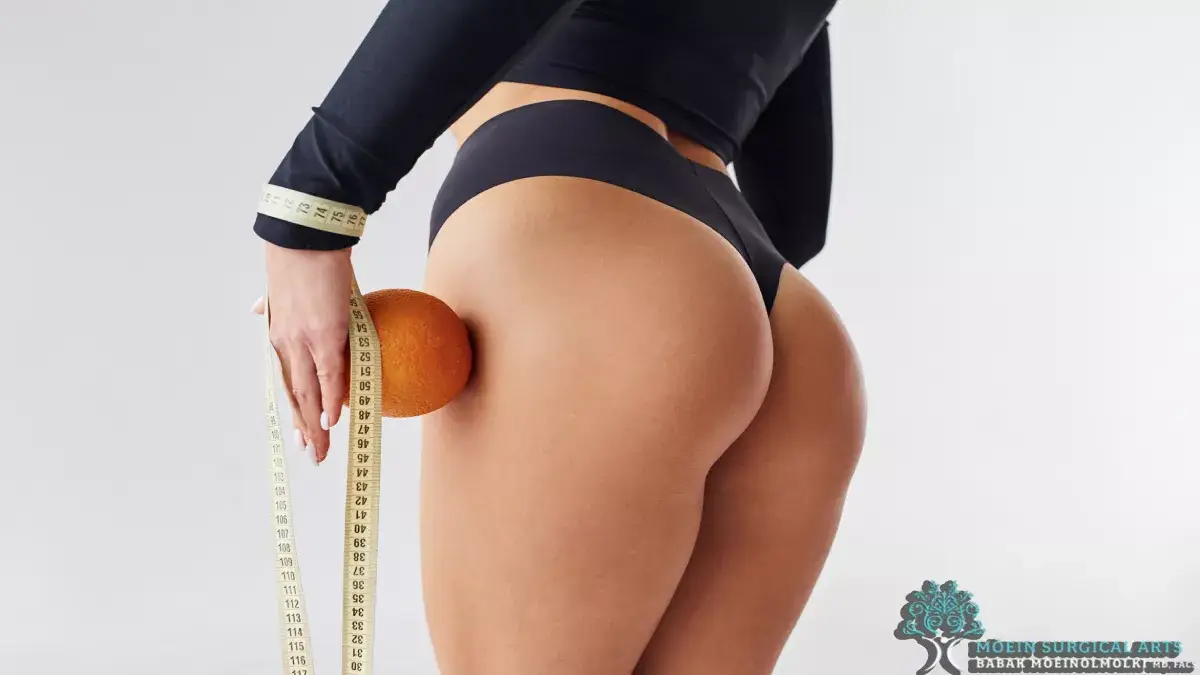
The Brazilian butt lift has become an increasingly popular cosmetic procedure in recent years. It involves removing excess fat from certain areas of the body through liposuction and then transferring that fat to the buttocks, giving them a fuller and more lifted appearance. As with any elective surgery, cost is an important consideration for those contemplating a Brazilian butt lift. However, it is essential to note that the cost can vary significantly across the United States.
In this article, we will explore the average cost of a Brazilian butt lift in different regions of the country, taking into account factors that may influence the overall price such as the surgeon’s experience, the location of the clinic, and additional fees associated with the procedure. By understanding the costs involved, individuals interested in a Brazilian butt lift can make informed decisions about their options and budget accordingly.
Average Brazilian Butt Lift Cost by City and State
The average cost of a Brazilian Butt Lift (BBL) can vary from city to city and state to state within the United States. In New York, NY, the average surgeon’s cost of a BBL ranges from $8,000 to $15,000. In Chicago, IL, the average cost ranges from $6,000 to $12,000. In Miami, FL, the average cost ranges from $5,000 to $10,000. In Birmingham, AL, the average cost ranges from $5,000 to $8,000. Finally, in Austin, TX, the average cost ranges from $6,000 to $10,000.
These prices are subject to change depending on various factors such as the surgeon’s experience, the clinic’s reputation, and the complexity of the procedure. It is important to note that these prices may only cover the surgeon’s fees and do not include anesthesia, facility fees, or additional costs associated with the surgery.
It is crucial to consult with a board-certified plastic surgeon like Dr. moein in Los Angeles to determine an accurate cost estimate based on your specific needs and expectations. It is also recommended to research multiple surgeons and clinics in each city to compare prices and ensure a safe and successful BBL procedure.
Conclusion: How much is a Fat Transfer to Buttocks in LA?
In conclusion, the cost of a fat transfer to the buttocks is influenced by various factors such as the location of the procedure and the surgeon chosen. The cost can vary significantly between different countries, including the United States, India, Spain, Turkey, and Hungary.
The location of the procedure plays a significant role in determining the cost. For example, the cost of a fat transfer in the United States tends to be higher compared to countries like India, Spain, Turkey, and Hungary. This is primarily due to higher healthcare costs and overhead expenses in the United States.
Additionally, the surgeon chosen can also influence the cost of the procedure. Highly experienced and reputed surgeons may charge higher fees for their services compared to less well-known surgeons. However, it is important to prioritize the skills and qualifications of the surgeon over cost as a fat transfer is a delicate procedure that requires expertise and precision.
Finding a reputable practice and surgeon is of utmost importance for a fat transfer procedure. It ensures that the procedure is performed safely and efficiently, reducing the risk of complications. Moreover, reputable practices and surgeons have a proven track record of delivering successful results, ensuring patient satisfaction.
In summary, the cost of a fat transfer to the buttocks depends on factors such as the location of the procedure and the surgeon chosen. While the cost may vary between countries like the United States, India, Spain, Turkey, and Hungary, it is crucial to prioritize safety and quality by selecting a reputable practice and surgeon.
]]>Fat transfer to the lips, also known as lip augmentation, is a procedure that enhances the volume and shape of the lips using the patient’s own fat. The process involves gentle liposuction to obtain fat from another area of the body, typically the abdomen or thighs. The fat is then purified and carefully reinjected into the lips to achieve a natural-looking result.
After the procedure, patients can typically expect some swelling, bruising, and an initial overdone appearance of the lips. However, these side effects usually subside within a week, and the final results can be seen once the swelling has resolved.
To showcase the results of fat transfer to the lips, before and after galleries are available for viewing. These galleries feature a collection of images that illustrate the transformation of the lips from their initial state to the post-procedure results. Patients can use these galleries to gain a better understanding of the potential outcomes and decide if fat transfer to the lips is the right choice for them.
Overall, fat transfer to the lips is a safe and effective way to achieve fuller, more balanced lips, providing natural-looking results with minimal recovery time.
Type of anesthesia for fat grafting
Fat grafting for lip augmentation can be performed using either general anesthesia or local anesthesia. General anesthesia allows the patient to be fully asleep during the procedure, while local anesthesia numbs the specific area being treated. For structural fat grafting, local anesthesia is commonly used as it allows the patient to be awake and communicate with the surgeon during the procedure.
Specifically for lip augmentation, local anesthesia is often used as it allows for precise placement of the fat grafts. The process involves harvesting fat from another area of the body, such as the abdomen or thighs, and then transferring it to the lips through small injections. This method allows for natural-looking and long-lasting results.
The typical duration of fat transfer to the lips procedure is approximately 1-2 hours, and the cost can vary depending on the amount of fat being transferred and the specific techniques used.
In conclusion, fat grafting for lip augmentation can be performed using local anesthesia, allowing for a comfortable and precise procedure with natural-looking results.
Results of fat transfer to Lips
Fat transfer to the lips, also known as lip augmentation, is a popular cosmetic procedure that aims to enhance the fullness and shape of the lips. The procedure involves removing fat from one part of the body, usually the abdomen or thighs, and injecting it into the lips to achieve a plumper appearance. Many individuals opt for this procedure to achieve a more youthful and symmetrical facial profile. In this article, we will explore the results of fat transfer to the lips, including the immediate and long-term effects, potential side effects, and the overall satisfaction of patients who have undergone this procedure.
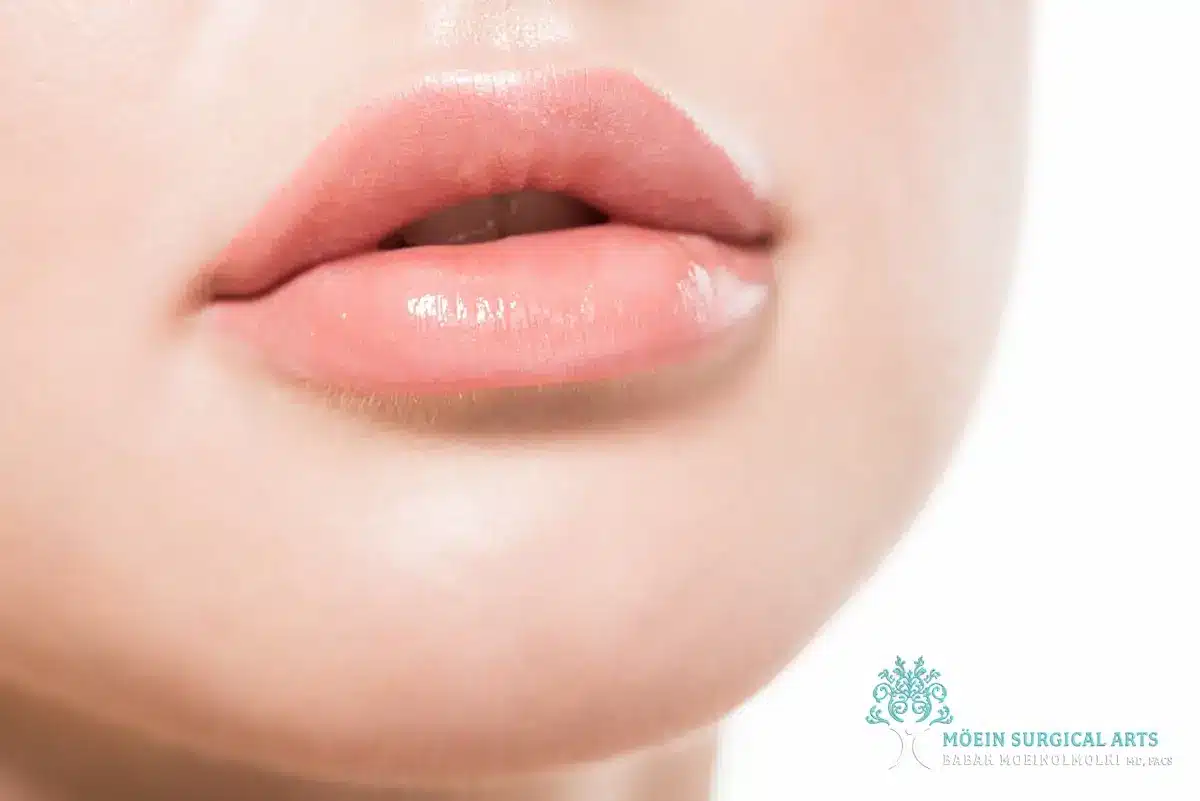
Lip volume
Lip volume enhancement can be achieved through several methods. Fillers, such as hyaluronic acid-based products, are injected into the lips to add volume and restore fullness. This procedure is non-invasive, with minimal downtime and immediate results. However, fillers are temporary and may require regular maintenance.
Fat injections involve harvesting fat from another part of the body and injecting it into the lips to add volume. This procedure offers a natural-looking, long-lasting result and can be combined with liposuction for body contouring. However, it requires a longer recovery time and can have variable results.
Lip lifts are surgical procedures that involve reshaping the lips to increase volume and expose more of the pink lip tissue. This method provides permanent results and can correct sagging or thin lips. However, it is a more invasive procedure with a longer recovery time and potential scarring.
Overall, lip volume enhancement procedures can provide a rejuvenated appearance, but each method comes with its own benefits and potential drawbacks. It’s important to consult with a qualified plastic surgeon to determine the best option based on individual needs and goals.
Lip shape
There are various methods for customizing lip shape, including customized injections in the white or red part of the lips, as well as the lip line, sides, and center. Fillers can be used to add definition to the lips, creating more volume and reshaping the overall appearance.
Fillers can fine-tune various areas of the lips, including the cupid’s bow, philtrum columns, and the vermilion border. However, it’s important to note that fat transfer may not modify the shape of the lips as much as fillers. Fat transfer is more suitable for adding volume to the lips rather than reshaping their structure.
The limitations of fat transfer in shaping the lips include the inability to make fine adjustments to specific areas of the lips and the potential for inconsistent results. Fillers, on the other hand, offer a more precise and customizable approach to reshaping the lips.
In conclusion, customized injections and fillers can be used to fine-tune various areas of the lips and add definition to the lip shape, while fat transfer may not be as effective in modifying the overall shape of the lips.
Fine wrinkles of the lip
Fine wrinkles of the lip can be effectively treated with facial fillers, such as hyaluronic acid-based products like Restylane or Juvederm. These fillers are injected into the lip area to plump up and smooth out the fine lines, creating a more youthful and rejuvenated appearance. Fat transfer can also be used to address fine wrinkles, but facial fillers are often preferred due to their predictable results and lower risk of complications.
In addition to facial fillers, nonsurgical treatments like BOTOX® or Dysport® injections can also be used to target fine wrinkles around the lip area. These injections work by relaxing the muscles, which reduces the appearance of wrinkles in the treated area. Furthermore, skin resurfacing treatments such as chemical peels or laser therapy can help improve the texture and appearance of fine skin wrinkles, leading to a smoother and more youthful appearance.
Overall, facial fillers are highly effective in addressing and reducing fine wrinkles of the lip, providing patients with natural-looking results and minimal downtime. When combined with other nonsurgical treatments, these options offer a comprehensive approach to improving the appearance of fine skin wrinkles around the lip area.
Lip feel and sensation
Facial fillers and fat transfer provide different lip feel and sensation. Facial fillers, such as hyaluronic acid-based products, may create a smooth and plump feeling in the lips. However, irregularities, bumps, and nodules can sometimes occur, especially if not injected properly. On the other hand, fat transfer involves the transfer of natural fat from one part of the body to the lips, resulting in a softer and more natural feel. Unlike fillers, fat can conform more effectively to the lips during movement, such as smiling and kissing, providing a more natural and dynamic sensation.
A lip lift procedure involves several steps. First, the area is numbed using local anesthesia. Then, the surgeon makes incisions either under the nose or along the lip line to remove excess skin. After the desired amount of skin is removed, the incision is closed with stitches. This procedure can enhance the lip sensation and feel by reducing the distance between the nose and the upper lip, resulting in a more youthful and defined lip appearance. Overall, the choice between facial fillers, fat transfer, or a lip lift should consider both the lip feel and the intended outcome.
Lip movement
Facial fillers, such as gels and fat transfer, can impact lip movement by adding volume and shaping the lips. When the lips move during actions like smiling or kissing, the gels or fat conform to the natural movement of the lips, allowing for a more natural appearance.
A lip lift procedure involves lifting the upper lip to make it appear fuller and more defined. This impacts lip movement as the repositioned upper lip can affect the overall movement and shape of the lips during expressions and actions.
Lip implant procedures involve inserting a synthetic implant to add volume and shape to the lips. This can impact lip movement by altering the natural flexibility and movement of the lips.
These procedures can impact actions such as smiling and kissing by changing the shape, volume, and movement of the lips. It’s important for individuals considering these procedures to understand how their lip movement may be impacted and to discuss their desired outcomes with a qualified medical professional.
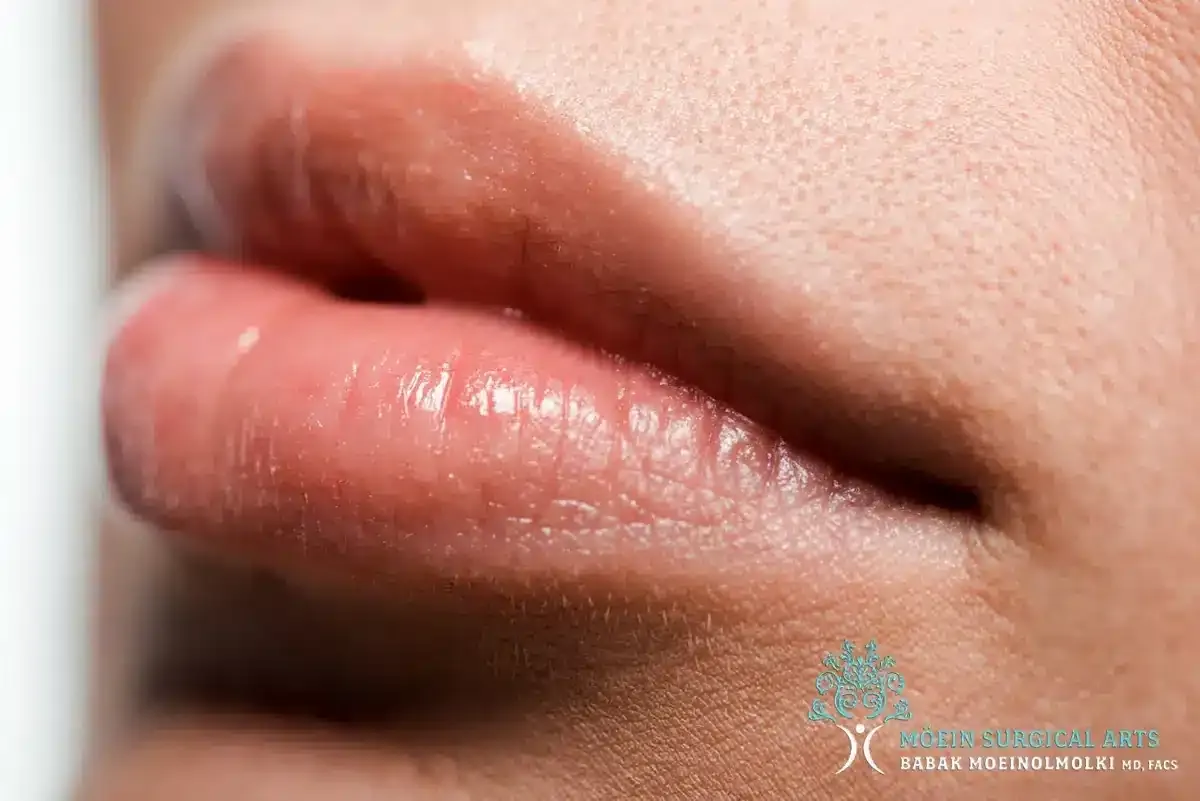
How Long Does the Procedure Take?
The average time frame for a lip augmentation procedure varies depending on the method used. Lip filler injections typically take around 15-30 minutes to complete, while fat grafting may take 1-2 hours as it involves harvesting fat from another part of the body before injecting it into the lips. A lip lift, which involves surgically lifting the upper lip, can take 1-2 hours, and lip implants may take around 1-2 hours as well.
Several factors can affect the duration of the procedure, such as the amount of fat being transferred in fat grafting, or the complexity of the case in lip lift and lip implants. The experience and technique of the healthcare provider can also impact the overall time frame of the procedure.
In summary, the estimated time range for each type of lip augmentation procedure is as follows:
– Lip fillers: 15-30 minutes
– Fat grafting: 1-2 hours
– Lip lift: 1-2 hours
– Lip implants: 1-2 hours
Factors such as the specific technique used and the individual patient’s anatomy and needs should be considered when estimating the duration of a lip augmentation procedure.
Recovery after fat transfer to lips
After undergoing fat transfer to the lips, patients can expect some swelling, bruising, stiffness, and an initial overdone appearance before the lips settle down to their final size. Swelling is the most noticeable during the first few days, gradually subsiding over the following weeks. Bruising may also occur and typically resolves within 7-10 days. Patients may experience stiffness in the lips, making it difficult to smile or speak properly, but this should improve within the first week.
Discomfort is usually managed with over-the-counter pain relievers, although the surgeon may prescribe stronger medication if necessary. Postoperative care includes keeping the lips hydrated and avoiding excessive movement to reduce swelling. Anticipated swelling, bruising, and stiffness typically resolve within 2-3 weeks, although it may take up to 1-2 months for the final results to become apparent. It’s important to follow all postoperative care instructions provided by the surgeon to ensure proper healing and optimal results.
Keywords: fat transfer, recovery, swelling, bruising, postoperative care
What Are the Risks of Fat Grafting?
Fat grafting, also known as fat transfer, involves the removal of fat from one area of the body and injecting it into another area to add volume or enhance contours. While fat grafting is generally considered safe, it does come with potential risks and complications. These can include damage to underlying tissues, changes in sensation at the graft site, infections, scarring, and skin irregularities.
More specifically, the risks of fat grafting include the possibility of damage to surrounding blood vessels, nerves, or muscles during the extraction or injection process. Changes in sensation, such as numbness or tingling, may occur due to nerve damage. Infections can also develop at either the donor site or the injection site, leading to complications and the need for further medical intervention. Additionally, scarring and skin irregularities are possible, especially if the fat is not evenly distributed or if there is poor healing at the graft site.
It’s important to note that these risks are relatively rare but still possible. Patients considering fat grafting should discuss these potential downsides with their healthcare provider to make an informed decision about the procedure.
How Long does Fat Transfer to Lips Last
The longevity of fat transfer to the lips is influenced by several factors, including individual anatomy and the surgeon’s skill and experience. The patient’s unique facial structure and tissue characteristics can impact how well the grafted fat takes hold in the lips. Additionally, a skilled and experienced surgeon can ensure that the fat transfer procedure is performed with precision, increasing the likelihood of lasting results.
In some cases, a second fat transfer session may be needed to achieve the desired lip volume or contour. This can be attributed to the fact that not all of the grafted fat may survive in its new location. On average, it is estimated that about 40-60% of the grafted fat remains in the body long-term.
Overall, patient experiences with fat transfer to the lips can vary, but many report long-term success with the procedure. The key to achieving lasting results lies in selecting a qualified surgeon with expertise in fat transfer techniques and understanding the individual factors that can impact the longevity of the procedure. In conclusion, the longevity of fat transfer to the lips depends on individual anatomy and the skill and experience of the surgeon, with the potential need for a second session, and an estimated 40-60% of grafted fat typically remaining in the body long-term.
Conclusion: Fat Transfer to Lips Before and After
Before Fat Transfer:
- Thinner lips with minimal volume
- Sunken or hollow cheeks
- – Drooping or sagging facial areas
After Fat Transfer:
- – Fuller and more voluminous lips
- – Plumper and rejuvenated cheeks
- – Lifted and enhanced facial areas
The fat transfer procedure involves taking fat from one part of the body and injecting it into the targeted facial areas, such as the lips and cheeks. Before the procedure, the lips may appear thin and lack volume, while the cheeks and other facial areas may appear sunken or droopy. After the fat transfer, the lips will appear fuller and more voluminous, creating a more youthful and enhanced appearance. The cheeks will also appear plumper and rejuvenated, adding a natural lift to the face. Overall, the fat transfer to the lips, cheeks, and other facial areas can provide significant improvement in the appearance of the face, resulting in a more youthful and vibrant look.
]]>Our comprehensive guide will delve into the origins and development of this groundbreaking technique. We’ll compare natural BBL procedures with traditional methods such as synthetic butt implants and discuss why more people opt for a more organic approach to butt augmentation.
We’ll also walk you through natural BBL surgery, from fat removal to transfer, along with essential aftercare tips for maintaining your newly sculpted figure. Additionally, we’ll share real-life experiences like Melissa’s journey through her successful BBL, which can provide valuable insights into what one might expect during one’s transformation.
Lastly, we explore innovative variations in modern-day enhancement procedures that cater to diverse aesthetic needs beyond conventional Brazilian Butt Lifts (BBL). You’ll discover new trends like the Miami BBL and learn about potential risks associated with surgical interventions so you can make an informed decision on your path toward achieving an idealized body shape.
The Evolution and Advantages of Natural BBL Surgery

Enhancing your booty? The natural Brazilian Butt Lift (BBL) surgery has got you covered. This procedure, pioneered by aesthetic surgeons Dr. Ivo Pitanguy and Dr. Raul Gonzalez in Brazil, has come a long way.
Origins and development of natural BBL surgery
Forget synthetic implants. The natural BBL technique involves using your body fat to enhance your buttocks. It’s like a fat transfer party. This approach revolutionized cosmetic surgery, giving you more realistic results.
Why is it so popular? Besides the amazing outcomes, it also reduces the risk of complications associated with foreign materials used in traditional butt implant procedures.
Comparing natural BBL to synthetic butt implants
- Natural look: Say goodbye to the fake look. With natural BBL, your fat is used, giving you a more authentic result than silicone or saline-filled implants.
- Fewer complications: Who needs complications? Using your tissue reduces risks like capsular contracture, which can cause discomfort or changes in shape over time.
- Dual benefit: It’s a two-for-one deal. Fat transfer involves liposuction from problem areas, sculpting your body while enhancing your booty at the same time.
But wait, there’s more. Natural BBL also means faster recovery times and a lower chance of infection since no incisions are required for artificial implants. It’s a win-win.
So, if you want a fuller, rounder derriere without the fake stuff, consider the natural Brazilian Butt Lift. Remember to research, choose an experienced board-certified doctor, and maintain a stable weight post-operation. Booty goals achieved.
The Process and Maintenance of Natural BBL
Enhancing your appearance with a natural Brazilian Butt Lift (BBL) is the way to go. This surgery uses your own fat for a more authentic and less risky booty transformation.
Fat Transfer Process in Natural BBL Surgery
First, we suction out fat from places like your belly, thighs, or back – wherever you have an extra cushion. Then, we purify that fat and carefully inject it into your buttocks using ultrasound guidance to give it the desired shape and fullness.
Importance of Aftercare Following a Successful Operation

Keeping your new and improved buttocks in top shape requires some effort. Watch out for weight fluctuations – gaining pounds can make your butt bigger while losing weight might shrink it again. So, try to maintain a stable weight after your natural BBL surgery.
Don’t forget to incorporate “BBL-specific workouts” into your routine. These exercises will help you strengthen your glute muscles without making your booty too big or too small. You can find plenty of tailored workout plans online, like this one.
Take good care of your incision sites by keeping them clean and avoiding strenuous activities until fully healed. This will speed up your recovery and reduce the chances of complications. Heed your surgeon’s instructions as if they were essential to your survival.
Remember, it’s not just about physical maintenance. Your emotional well-being is important, too. Feeling good about yourself boosts your confidence and helps you embrace your new look. So, treat yourself with extra love and care during your recovery period.
Real-life Experiences with Natural BBL Surgery
The power of a well-executed natural BBL surgery can be understood through real-life experiences. Take Melissa, for example, who underwent this procedure under UK guidelines.
Melissa’s Successful Journey
When Melissa considered natural BBL surgery, she wanted to boost her self-esteem and improve her body image. She researched and chose a board-certified doctor for safety and effective results.
Melissa was active but had stubborn fat in her abdomen and thighs. Transferring this unwanted fat to enhance her buttocks appealed to her. After the surgery, she achieved a more proportionate figure and removed those troublesome fatty areas.
During her recovery, Melissa followed her surgeon’s aftercare instructions, including maintaining a stable weight and incorporating “BBL-specific workouts” for long-lasting results. Years later, she continues an active lifestyle, exercise, and a balanced diet to sustain her new look.
Aside from the physical changes, Melissa’s experience boosted her confidence. She now feels empowered and confident in her skin.
Innovative Twists in Modern Butt Enhancement Procedures
As cosmetic surgery evolves, so do the techniques used by surgeons. They cater to diverse needs among patients seeking improved aesthetics.
Overview of Moein Surgical Arts Services

Moein Surgical Arts offers a unique experience for enhancing your appearance. Their all-inclusive package covers everything from consultation to recovery. With top-notch facilities and skilled professionals, they aim to make your transformation as comfy and stress-free as possible.
They don’t just focus on butt enhancements like natural BBLs; they also offer other aesthetic procedures like rhinoplasties and breast implantations.
Addressing Diverse Aesthetic Needs Beyond Conventional BBL Surgeries
Butt enhancements aren’t the only thing people desire. Some want a balanced facial structure through rhinoplasty, while others seek fuller breasts with breast augmentation surgery.
Instead of going to multiple clinics, Moein Surgical Art‘s comprehensive approach allows you to address all your aesthetic concerns under one roof – saving time and ensuring consistent care quality.
To summarize this section on modern butt enhancement procedures: whether it’s refining facial features or augmenting body contours, diverse solutions are available today. So before deciding on a method, thoroughly explore options to find the best fit for your goals and lifestyle. Remember that the ultimate aim is to acquire a desired aesthetic and feel confident and secure with your body.
Exploring New Trends
In the ever-evolving world of aesthetic medicine, new trends are constantly emerging. One such trend is the Miami BBL. This method has gained popularity for its ability to dramatically change appearances while addressing common complaints about loss of firmness and roundness due to aging or naturally straight rectangular shapes.
The Concept Behind The Miami BBL
The Miami BBL focuses on creating an upside-down heart shape in the buttocks area, accentuating hourglass figures. This approach differs from traditional BBL surgeries that aim for a more rounded appearance. The result? A more youthful-looking backside with enhanced curves that mimic those seen on many celebrities today. The Miami BBL is not as popular on the West Coast except in the Latin American communities.
This process entails extracting extra fat from other body parts – such as the tummy, waist, or back – with liposuction and then injecting it into specific sections of your backside to attain preferred outcomes.
Managing Expectations When Opting For Newer Versions
While newer versions offer promising results, managing expectations is crucial. Remember, every body is unique, and results may vary.
- Research: Do your homework before deciding on any surgical intervention. Read patient testimonials, check before-and-after photos, and understand the potential risks involved.
- Selecting Your Surgeon: Choose a board-certified cosmetic and plastic surgeon experienced in performing butt lift procedures. A skilled practitioner can reduce the risk factors associated with surgery.
- Maintaining Results Post-Surgery: Maintain your new look by pairing a balanced diet with regular exercise.
Remember, cosmetic enhancements should always be about feeling good within yourself rather than fitting into societal beauty standards. Whether you opt for natural BBL surgery or explore newer trends like a Miami rounder, larger BBL, prioritize your safety and consult certified professionals.
Understanding the Risks of Surgery

Don’t forget surgery isn’t all just about results. There are risks involved.. Before having surgery, take the time to find a qualified doctor who is certified by a board and has experience. Safety first.
Do Your Homework
Do some digging before you jump into a natural BBL or any other cosmetic procedure. Find a reputable cosmetic or plastic surgeon who specializes in what you want. If possible, check out their credentials, ask about their experience, and see some before-and-after pics.
Be sure to understand the procedure and its potential risks thoroughly. Be aware of the potential risks and consequences before taking action. Websites like RealSelf can give you the lowdown from both patients and experts. It’s like Yelp for surgery.
Keep It Healthy After the Operation
It’s not just about the surgery, my friend. You have to keep up the good work afterward. Eat right, exercise, and take care of yourself. It’s like maintaining a fancy car; instead, it’s your body.
- Diet: Eat fruits, veggies, lean proteins, and whole grains. Keep that weight stable, baby. And if you need some help, consult a nutritionist for a personalized meal plan. You’re worth it.
- Fitness: Get moving, my friend. Regular exercise helps you recover and keeps that body looking fine. If you’ve had a BBL, focus on those glutes. Always check with your doctor before starting a new workout routine. Safety first, remember?
The journey to looking fabulous doesn’t end in the operating room. It’s a commitment, my friend. So, adopt those healthy habits and take care of yourself. You’ve got this.
FAQs about Natural Bbl Surgery
Is it possible to have a natural BBL?
Yes, you can have a natural Brazilian Butt Lift (BBL) without any fake stuff.
How long does a natural BBL last?
A natural BBL can give you a booty that lasts longer than your last relationship.
What are the results of a natural BBL?
The result of a natural BBL is a perky posterior that will make heads turn faster than a Beyonce concert.
How can I get a natural BBL without surgery?
Sorry, but there’s no magic potion or fairy dust to give you a natural BBL without surgery.
Conclusion: Natural BBL Surgery
- The safe and effective way to enhance your appearance, no synthetic butt implants needed!
- With origins in fat transfer procedures, this surgery gives you a more natural look and a harmonious, proportionate result.
- Aftercare is crucial for success, so heal properly and make good lifestyle choices.
- Check out Melissa’s journey for real-life proof that natural BBL surgery works wonders!
- But remember, research the risks and manage your expectations before going under the knife.
Looking for something new to enhance your appearance? See us at Moein Surgical Arts for your personalized consultation.
]]>The doctor orders liposuction when you have stubborn pockets of fat that do not respond to diet and exercise. With a single liposuction procedure, your favorite body parts become slimmer and more proportional to the rest of your body.
It is not well-known that there are different types of liposuction. This post is about one of the most advanced forms of lipo called VASER.
The term VASER stands for Vibration Amplification of Sound Energy at Resonance. Put simply, the technique involves using sound energy to break up stubborn fat. The results leave the body slimmer and the skin tighter.
To understand why VASER is the bee’s knees, it helps to learn more about traditional liposuction so that you can determine how the two forms are different. Once you see that VASER can give you everything you want for your aging body, you’ll soon be clamoring to schedule an appointment for this amazing aesthetic technique.
Here is all you need to know about VASER liposuction, one of the most technologically advanced cosmetic procedures on the market.
What Makes VASER lipo vs Lipo Important?
VASER liposuction was developed by Doctor Alfredo Hoyos from Bogota, Columbia who sought a way to improve body contouring based on traditional liposuction techniques. Few people know that traditional liposuction has been in use since the mid-70s. Doctor Hoyos expanded on the technology. VASER has been employed on cosmetic surgery patients for around 15 years but is only now gaining worldwide popularity.
VASER is a type of liposuction that is performed under general anesthesia. The procedure takes around two hours, depending on the size of the treatment area. Like traditional liposuction, the procedure removes unwanted fat from the body.
The most common areas for VASER to be performed include the neck and chin, the underside of the arms, chest, back, flanks, buttocks, hips, tummy, thighs, knees, and ankles.
Before the procedure, the cosmetic surgeon marks the treatment areas of your body with a marker. These lines indicate where the technique will be employed. You will then be seen by an anesthetist, who will discuss the type of anesthesia to be used. In most cases, you will be placed under general anesthesia. However, local anesthetic and mild sedation are sometimes employed for smaller areas.
During the procedure, a tumescent saline solution is inserted under the skin through a tiny incision. The solution serves three primary purposes. The first is that it numbs the area. The second is that it prevents excess bleeding. The third reason for the solution is to break down fat cells for easier removal.
Once the solution has performed the necessary tasks, a small probe is inserted into the incision. The probe emits ultrasound waves that break down and further liquify fat cells. The liquified fat is then gently sucked out using a small needle.
Traditional Lipo vs VASER – What’s the Difference?

If you are familiar with traditional liposuction, you may think that both techniques sound oddly similar. You would be correct. However, there are distinct differences that make VASER highly sought after for those who would otherwise choose traditional liposuction for a slimmed-down makeover.
Removes Stubborn Fat with Less Effort
This may not be a selling point for you, but VASER liposuction is much easier on the cosmetic surgeon. Traditional liposuction also involves a tumescent fluid for the same purposes. Unlike VASER, instead of a probe being inserted into the tiny incision, a cannula is inserted.
A cannula is a thin metal rod. This rod is connected to a vacuum suction device. Even though the tumescent fluid helps to break up fat somewhat, thick clumps of fat will still remain. The cannula is used during traditional liposuction to break up fat further before it can be removed. The cosmetic surgeon must move the cannula back and forth vigorously to accomplish this. This back-and-forth motion liquifies the fat that clings to the inner surface of the skin. Imagine a can of Crisco and the butter knife you might use to scoop the fat from the sides. The cannula is used kind of like that. This is tough on the cosmetic surgeon.
With VASER, ultrasound energy does the work of breaking down the fat. This makes the cosmetic surgeon much less fatigued, which is also safer for the patient.
Less Blood Loss and Bruising
Speaking of safety, VASER liposuction is considered safer than traditional lipo. All that vigorous movement with the cannula can be tough on the body. If you have ever seen video of liposuction being employed, you may notice that the body appears battered and bruised. This is normal. All of those bruises will heal in time after the surgery is completed. But the back and forth motion is necessary if the cosmetic surgeon wants to rid the treatment area of all the stubborn fat.
VASER liposuction uses sound energy instead of a vigorous back and forth motion. That means the body ends up less bruised. There is also less bleeding overall. Because of this, you are likely to feel less pain and discomfort once you wake up from general anesthesia.
VASER Liposuction Offers Faster Recovery
All that back and forth activity can leave your body feeling sore following traditional liposuction. Because of this, it may take a while before you can return to your everyday activities. You may be able to return to work in a few days, but it can take up to six weeks before you are back to your normal routine, including exercise.
With VASER lipo, you will be back to work in a couple of days. You can then be back to your normal routine within one week. Of course, recovery depends on the person. If you are a fast healer in general, you could be back to exercising within a week to a week and a half. Slow healers may require a couple of weeks before they can hit the gym and return to their usual day-to-days. Still, you will heal faster from VASER than you will from traditional liposuction, which is one of the biggest selling points for this modern wonder of cosmetic surgery technology.
Improves Skin Quality and Boosts Skin Tone

Traditional liposuction is used only for fat removal. The technique should not be thought of as a fat loss method, per se. However, if you have stubborn pockets of fat, even large ones, traditional liposuction is the method to choose.
The technique’s effect on the skinAnother factor that makes VASER liposuction superior to traditional liposuction. VASER removes stubborn fat and improves the quality and tightness of the skin. This only occurs if you already have good skin elasticity to begin with. If you have too much excess skin or lax skin, VASER won’t make much of a difference.
But if you have a slight amount of skin laxity, VASER can tighten up the treatment area. Losing fat and having tighter skin can give you improved skin tone. This is one of the reasons body builders and fitness enthusiasts love VASER. They not only get slimmer, but they get tighter skin, which allows their muscles to show through much better.
VASER is More Precise Than Trad Lipo
Traditional liposuction is better than VASER for removing large pockets of fat. That is, VASER cannot remove as much fat as traditional lipo. However, when placed in the hands of a skilled cosmetic surgeon, VASER allows for superior body contouring.
You may be wondering how removing less fat can contour a body better. Well, VASER is much better at etching out areas of the body around the musculature. VASER works on the superficial levels of fat that exist just below the layers of skin. With VASER, the body’s musculature can show more clearly once the swelling after the procedure has subsided. In fact VASER is commonly used on the abdomen to reveal six pack abdominal muscles during a procedure called abdominal etching or ab etching.
Read our article: Tips for Maintaining Your Liposuction Results
VASER is Better for Fat Harvesting
Liposuction is often paired with other procedures. For example, if you have excess hanging skin on your abdomen, we’ve already mentioned that traditional liposuction won’t do much for you. You can have the fat removed but that excess skin is likely to remain. For this reason, many patients choose to pair traditional liposuction with tummy tuck surgery. That way, they get a slimmer midsection and a taught tummy to boot.
Another common procedure that is paired with liposuction is fat grafting. Fat that is removed from one area of the body is subsequently injected into another area for a volume expansion. Common areas for fat grafting (also referred to as the fat transfer technique) include the breasts and buttocks.
Fat Grafting for Breast Augmentation
Most people are familiar with breast implants that improve the size and shape of a woman’s breasts. Fat grafting can be used alongside breast implants or by itself to increase the size of the breasts for natural-looking results. Breasts are mostly comprised of fat anyway. By introducing your own fatty tissue to the breasts, you get results that appear as though nature gave them to you. You’re also not going to suffer from an allergic reaction as you might with artificial fillers.
Fat Grafting for Brazilian butt lift
The Brazilian butt lift is another common technique that uses your own fat to expand the projection and volume of your buttocks. The fat is first sterilized before the fatty tissue is then injected strategically around your backside for greater emphasis. You can get a subtle boost or a major boost, depending on your preferences.
It turns out that VASER liposuction is superior than traditional lipo when it comes to harvesting the fat for the fat transfer technique. The cosmetic surgeon is able to use twice the amount of collected fat when using VASER when compared to the traditional method. This is useful because some of the fat that is injected will be absorbed by your body. This is normal and happens with every fat transfer operation. The more fat that is harvested, the more likely you are to obtain the expected results. That makes VASER the superior type of liposuction to undergo if you want clean and harvestable fat for fat grafting to another area of your body.
How Much is VASER Liposuction Compared to Traditional Liposuction?
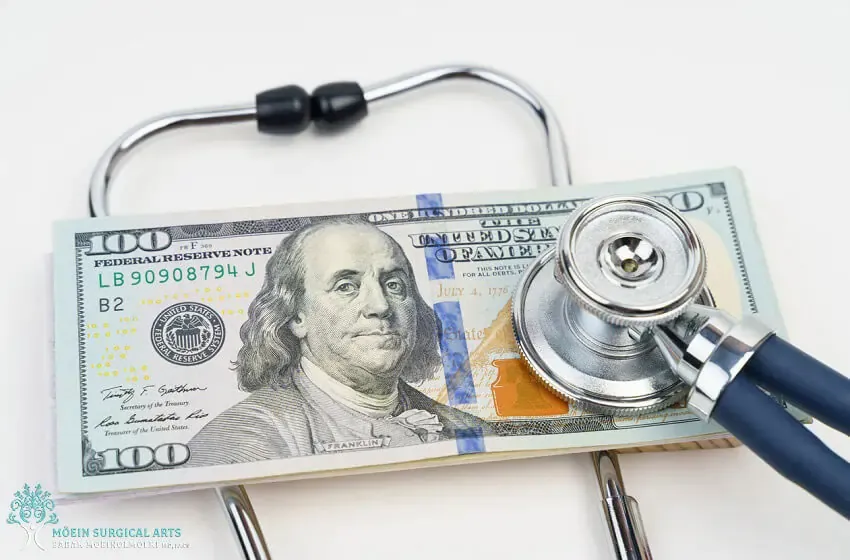
Traditional liposuction comes with an average fee of around $3,600. The fee you pay will depend on the size of the treatment area.
VASER liposuction is slightly more expensive because of the extra technology being employed. VASER costs around $7,828 on average.
Insurance does not cover cosmetic procedures that are used solely for aesthetic improvement, which includes liposuction. Most cosmetic specialists have information in their offices related to medical financing programs. Take advantage of these programs if you can’t afford to pay for VASER out of pocket and want the procedure now with an extended repayment plan.
Now That You Know More About VASER Liposuction, Book an Appointment Today
Bob Hope hilariously once said, “The older you get, the tougher it is to lose weight because by then, your body and your fat are really good friends.” How true!
VASER liposuction offers a safe and precise way to lose stubborn fat, regardless of your age. Older folks can regain some of their lost youth thanks to VASER’s ability to remove fat and tighten the skin.
Younger folks in their twenties and thirties can improve their bodies by allowing their musculature to show through after the fat has been suctioned away.
Want to learn more? Call Moein Surgical Arts to schedule a consultation with world-renowned cosmetic surgeon Doctor Babak Moein. You can undergo VASER by itself or pair it with another procedure for body contouring with dramatic results. Book your appointment today by dialing (310)694-4486.
]]>This cosmetic technique is known as natural fat grafting, which has existed and been popular in some form or another since the 1980s.
The idea behind natural fat grafting is to fill in certain areas with the same substance your body uses to enhance those areas – fatty tissue.
Breasts are composed of breast tissue, connective tissue, and fatty tissue. By adding more fat to your breasts, a skilled cosmetic surgeon can repair contour irregularities, fix certain other defects, as well as add symmetry.
The same goes for the behind, and other areas like your cheeks or lips.
The big question patients usually have at this point is, “Where does the fat used in fat grafting come from?”
The answer is you. The fat comes from you. We will describe how the surgeon extracts and uses it in the following sections. As you read, begin imagining what natural fat grafting could do for your body contours.
You can learn more about fat grafting and your candidacy for cosmetic surgery by scheduling a consultation with Dr. Babak Moein of Moein Surgical Arts.
What is the Natural Fat Grafting Technique and How to Use it in Cosmetic Surgery?

Surgical fat grafting also referred to as the autologous fat transfer or more simply the fat transfer technique is used to restore volume to various areas of the body.
Here are some common areas you might want to have fat injected to add more size and smoothness where nature may have let you down.
Erase Facial Defects
The procedure can be used on the face to remove indentations in the skin, such as those caused by acne scarring. The technique can also work to ease away expression lines, wrinkles, and to add cheek volume.
Breast Enhancement
Surgeons can use natural fat grafting in breast reconstruction to rebuild the breasts and add symmetry.
Women can also use the autologous fat technique during breast augmentation, either alongside or without breast implants.
Increase Buttocks Size
Fat transfer can be used to lift and add roundness to the behind.
The technique can extend to the thighs to give an all-around and all-natural-looking boost to the posterior area of your body.
Vaginal Rejuvenation
Fat transfer performed on the vagina can add lost volume to your most intimate of areas while restoring a more youthful appearance.
Natural Fat Grafting for Other Body Areas
The surgeon can perform the fat transfer techniques virtually anywhere, from head to toe. Chest, legs, and arms are alternate common areas where fat is infused to add lost volume.
The fatty tissue can sometimes be used to give the appearance of larger muscles, and it restores youthfulness to your skin and body.
Fat Extraction is Necessary for Fat Transfer in Cosmetic Surgery
The first part of the fat transfer technique involves the collection of fat cells.
The surgeon collects the fat from a donor site, which is an area of your body with enough adipose tissue to spare.
Liposuction is used on the donor site to extract the fatty tissue. This gives you the benefit of slimming one area while boosting the volume of another.
Common donor sites where the surgeon can extract the fat from for the fat transfer process include the belly, back, and thighs.
The abdomen is the most common donor site for fat extraction.
The type of liposuction used for the extraction is referred to as tumescent liposuction.
The procedure first involves the use of a subcutaneous liquid that combines anesthesia with a substance that helps to break up and dissolve fatty tissue.
The liposuction procedure involves a small incision, whereby a thin metal tube called a cannula is inserted to further break up and suction out the fat.
The suctioned fat stays gone permanently from the donor site.
The fat will then be treated before it is injected into your key body parts for a natural infusion of volume and youth.
Fat Transfer Involves the Injection of Your Own Fat
Tumescent liposuction has proven to be the most effective fat extraction method that also preserves the fatty tissue well enough for re-injection.
The fat isn’t injected back into your body straight away. The surgeon must first treat the tissue to sterilize it and ensure to mix it well enough to allow for the evenest application. You don’t want lumps under your skin.
The fat cells are processed and sent through a centrifuge to remove impurities. Once the mixture is thoroughly treated, it can be prepared for injection.
Fat injection into the face, breasts, or buttocks requires careful precision and an artistic touch.
Cosmetic surgeons are the most suitable for fat transfer surgeries because they understand how to apply natural-looking contours to the body using fatty tissue.
The surgeon will perform each injection in strategic locations. This allows for a careful layering of the fat cells underneath the skin.
The end result looks like nature gave the results to you.
The best part is that you get subtly larger breasts, a more voluptuous butt, and younger-looking features without the scarring associated with other cosmetic procedures.
Benefits of Fat Transfer Technique

Uses Your Own Fat
Cosmetic surgeons have alternative ways of adding volume to areas of the body. Synthetic dermal fillers are one option; cosmetic implants are another. Common examples include breast implants and buttock implants.
With synthetics and implants, or anything else foreign, there is a chance your body could reject the surgery.
The fat transfer technique uses your own fatty tissue. You won’t form an allergy to it and your body isn’t likely to reject it. You get a natural infusion of volume that is likely to stay for the long term.
Slim Your Abdomen or Other Bodily Area
A prime benefit of fat grafting is that you can use it for belly fat removal, for example. If you have part of your body with excess fat, you could find it looking nice and trim by using it as a donor site for the fat transfer technique.
Looks and Feels Natural
Unlike some implant surgeries, which can produce a firmer feel to the skin, the fat transfer technique produces ultra-soft tissue that feels naturally enhanced. No one will know you had work done unless you tell them.
What is Recovery Like for Fat Transfer Cosmetic Surgery?
You will notice immediate improvements to the area once you come out of surgery.
Much of what you see will be swelling from the procedure, and from overfilling.
Your surgeon over-fills the area with fatty tissue on purpose. Your body will absorb some of the fatty tissue as part of its normal biological processes. Much of the excess will remain, giving you added volume and the fresher features you desire.
The swelling will eventually subside, and the true effects of the surgery will be visible.
The cells that transfer successfully will continue to add volume permanently, even aiding in new collagen production to improve the area and add youthfulness to the skin over time.
The effects will become more visible the more time passes, and natural collagen production increases.
How Long Does Natural Fat Grafting Last?
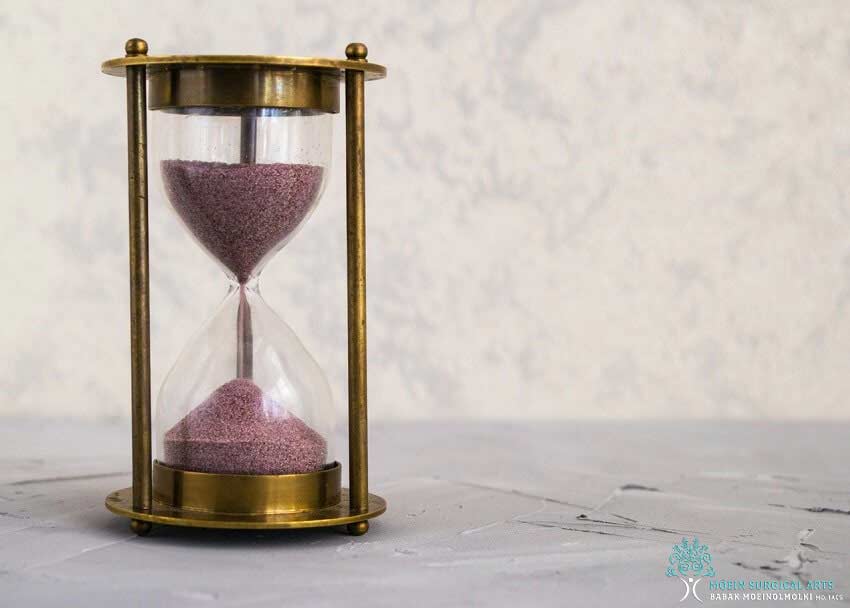
There is no set answer for how long the fat transfer technique will last. The best answer is that you can preserve the effects of fat grafting by following a healthy lifestyle. Do your best to keep your weight stable and follow your surgeon’s suggestions for keeping your skin and body healthy.
Age will come for us all. While natural fat grafting cannot stop the aging process, adding fatty tissue to key areas can keep you looking younger at least as long as possible.
Surgical Fat Grafting May Require Additional Treatments
Depending on your anticipated results, you may require four to six sessions to get the best outcome. Your cosmetic surgeon can discuss a treatment plan that includes fat transfer. He will also give you a good idea of how many sessions to expect for the most dramatic results.
Ready to Discuss Fat Transfer to Cosmetically Enhance Your Face or Body?
Fat grafting or fat transfer can add volume to hollowed-out areas of the skin while eradicating defects.
You can enhance the roundness of the buttocks and restore symmetry to your breasts.
Breasts can also be surgically enhanced with fatty tissue or added to breast implants for natural realism.
If you are seeking a cosmetic procedure that offers immediate and permanent results, schedule a consultation with Dr. Moein.
At Moein Surgical Arts, we want to help you feel better about the way you look on the outside, so your inside beauty shines through.
We can do that through the fat transfer technique and other cosmetic procedures aimed at helping your exterior glimmer and self-esteem surge. Book your appointment and get answers to questions about surgical fees, insurance, and financing by calling our Southern California office: (310)694-4486.
]]>There are essentially two ways to augment your natural breasts – breast implants and fat grafting. Let’s look at both of these techniques a moment to gauge their pros and cons.
Breast Implants vs. Fat Grafting
Breast implants are FDA-approved medical devices that are placed underneath the muscle to give the breasts more volume. You can essentially go as large as you want with breast implants (within reason) and the results are extremely dramatic.
The downside to breast implants is that they may need to be replaced, especially if they become damaged (which is rare and only happens in a small number of cases).
Fat transfer uses your own fat to increase the fullness of your breasts. Fat transfer is ideal for addressing common breast concerns like unevenness and distortion after lumpectomies. Fatty tissue is first harvested from an area of your body (such as your abdomen) through liposuction. The fat is then re-injected into your breasts for a natural-looking augmentation.
The downside to fat transfer is that you are limited in size and some of the fat may become reabsorbed by your body, which can affect the final results. But that’s not as bad as it sounds.
There are many benefits to the fat transfer technique for augmenting your breasts. Let’s look at some now.
Fat Transfer Benefits for Breast Augmentation

Lose Inches from Another Area of Your Body
While your breasts are getting a boost, you get to slim down another area of your body. Liposuction can be used virtually anywhere to harvest enough fatty tissue to make your breasts larger and fuller.
The area of your body that is used to harvest the fat is known as a donor site. There must be enough fat at the donor site for the breast augmentation surgery to be effective. Potential lipo donor sites include the love handles, outer thighs, inner thighs, abdomen, flanks, knees, arms, and calves.
That means you get to improve your body shape while simultaneously improving the size and shape of your breasts.
More Natural Procedure
Silicone, saline, and gummy bear breast implants are FDA-approved medical devices, but they are still foreign to your body.
Fat grafting is different. The method uses fatty tissue from your body. This is the tissue that you grew yourself, so your body is less likely to reject the implantation. This makes the fat transfer safe, effective, and less likely to produce complications.
Longer Lasting Results
Breast implants are not permanent. You might wear breast implants for ten or fifteen years, but the prostheses may eventually need to be replaced.
With fat transfer, there is nothing to replace. Fat transfer consists of fatty tissue. Once implanted into your breasts, the supplemented fat becomes part of you. That makes breast augmentation with fat grafting a permanent procedure. As long as you keep your weight stable, the results you get from cosmetic surgery should last indefinitely.
More Pleasing Breast Shape

With breast implants, you are beholden to the shape of the implant you choose. That’s not the case with fat grafting.
Because the fatty tissue is so malleable and without any pre-existing form, your surgeon can sculpt your breasts into the desired shape for more natural-looking results.
Less Invasive
Breast implants are essentially non-toxic bags of saline or silicone that are placed into pockets located underneath your chest muscle. This requires moderately-sized incisions in order to place the breast implants properly.
The liposuction procedure required for fat grafting requires only a few tiny incisions at the donor site. Fat grafting after the fat has been harvested doesn’t require any incisions at all. With fewer incisions, you also get fewer scars, less swelling, and an easier recovery.
Feel More Natural
Breasts are naturally made of fat, so it makes sense that adding more fat would make your breasts look and feel natural.
Fat transfer doesn’t just increase the size of your breasts. It also makes your breasts look more rounded with enhanced cleavage and a softness that is as natural as can be.
Permanent Breast Augmentation
When your cosmetic surgeon injects your own fat into your breasts for the purposes of augmentation, you can expect around 50% or 70% of the fatty tissue to survive. The rest will become absorbed by your body. After four to six weeks, your breast size will stabilize.
Your cosmetic surgeon may add a bit more fat to accommodate this reabsorption, leaving you with permanent results at your desired cup size. As long as you maintain a healthy weight, your breasts will retain their augmented appearance for years into the future.
That being said, if you lose weight, your breasts will shrink in size. Similarly, your breasts will increase in size if you gain weight. Keeping your weight stable is necessary to retain the look you want after fat transfer breast augmentation surgery.
Subtle Size Increase
Breast augmentation with fat transfer can give you about one or two cup sizes above your natural breast size. The fat tissue gives you more subtlety, which is often what you want when you expect dramatic results, but you don’t want your breast surgery to be too obvious.
If you want a greater size than one or two cups, breast implants may be the preferred breast surgery option.
WHAT ARE MY BREAST AUGMENTATION OPTIONS?
How Much is Breast Augmentation with Fat Transfer?

Fat transfer breast augmentation costs $9,175 on average, according to Real Self. While insurance is unlikely to pay for the procedure because of the cosmetic nature of breast surgery, medical financing is available from companies like Prosper Healthcare Lending and CareCredit.
Breast Augmentation Consultations with Dr. Babak Moeinolmolki
Do you desire a subtle breast size increase with dramatic results? You might want to discuss the matter with Dr. Babak Moein of Moein Surgical Arts. Dr. Moein has over 20 years of experience performing breast augmentation with fat transfer and he looks forward to helping you in Los Angeles, Glendale, or Encino, California. Dr. Moein can also augment your breasts as part of a Mommy Makeover procedure. Call now to schedule a consultation with world-renowned cosmetic surgeon, Dr. Moein – (310)455-8020.
]]> Schedule Consultation
Schedule Consultation View Credentials
View Credentials Read Reviews
Read Reviews